































































Close the Loop sale to Adamantem terminated P05
The company is now back on the market
Label Power buys new Bobst P06
Aims for growth with the new machine
Omni Group appoints new MD P06
Jonathan Salisbury named as the new MD
Amazon Australia axes singleuse plastic delivery bags P08
Replaces them with recyclable paper and cardboard alternatives
Esko, Fiery, and HanGlobal/ HanLabel collaborate P08
The companies come together to deliver a customised DFE for the LabStar series
Koenig & Bauer restructures P10
Focuses on high-growth packaging market
Visy gets new solar panels P10
Partners with two solar energy companies to install solar panels on select sites
A/NZ PIDAs winners in WorldStar Packaging Awards P11
A/NZ companies receive the fourth highest number of wins at the WorldStars
Highcon and Hybrid Software ink collaboration P12
The companies come together for digital die cutting workflow efficiency
Detmold Group outlines new global sustainability goals P12
The move ensures its customers make responsible and informed packaging choices
Fivestar Print buys an Epson SurePress digital label press P13
Fivestar Print has installed an Epson SurePress L-4533AW digital label press at its Auckland site, supplied through FBNZ
Affinity Print invests to become bigger, bolder and better P14-15
The company is at the top of its game with a new, bigger site

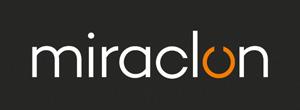
Ali Farid and Shaleen MacGregor take the company from strength to strength
Packaging Leaders Forum P17-36
Thought leadership from: 18 Currie Group
Durst Oceania
Hybrid Software
Jet Technologies
Detmold Group 27 Immij Print & Packaging
28 Impact International 29 Kuhn Corp
in label production P37
Digitalisation and automation fuel its growth
Packaging reform in Australia P38
Packaging industry reform is critical for the industry, but must work for Australia
Dantex innovative digital label printing is available now P40
Dantex launches the PicoColour HD and PicoJet 1200 models MPS EF Symjet digital hybrid label printing boosts efficiency P41 The machine sets a new benchmark for efficiency, versatility, and print quality The evolution of barcodes P42-44 A new chapter in barcode evolution is unfolding, unlocking a world of data
A guide to the upcoming events locally and internationally









Note

Welcome to the first issue of ProPack.pro for 2025. As always, the start of the year is one of reflection and planning for the months ahead. Although the industry faced some challenges in 2024, it was generally a positive one for most and the early adopters of trends flourished. 2025 looks to be favourable for the industry too. As mentioned by thought leaders in the Packaging Leaders Forum within this issue, the year will be led by innovation, sustainability, and driving customer value. Have a read of what these executives had to say.
This issue also highlights Affinity Print’s recent move to a bigger facility, and the plans its owner Steven Todisco has for the business. We also profile Ali Farid and Shaleen MacGregor, the duo behind PakPro.
We hope you enjoy the read.
Close the Loop (ASX:CLG) recently issued a statement on the ASX, updating its shareholders that the proposed sale of the company to private equity firm Adamantem has been terminated, leaving the company operating as a standalone entity and open to offers from other interested buyers.
The sale to Adamantem ceased as the binding transaction documentation between both companies was not executed and the indicative proposal involved “considerable complexity”, resulting in both parties unable to reach alignment on the commercial terms.
Founded in 2016, Adamantem manages assets in Australia and New Zealand across both private equity and, through Melior Investment Management, public market strategies. It already has a foot in the packaging space, having invested in Australian national distributor of sustainable packaging and serviceware products, Pac Trading, in July 2023.
Close the Loop announced to the ASX on 19 November 2024 that it had entered into a transaction process deed, granting Adamantem an expedited period of exclusivity, allowing it to undertake due diligence and negotiate a binding Scheme Implementation Deed to acquire all of the shares in Close the Loop.
On 18 December 2024, Close the Loop extended the exclusivity period to 20 January to allow for

finalisation of due diligence and negotiation, and signing of binding transaction documentation.
However, on 21 January, Close the Loop issued a statement saying the exclusivity period for the transaction had ended, even though Adamantem continued to progress its due diligence and discussions with Close the Loop.
At the time, Close the Loop said, “There is no certainty that the parties will enter into binding documentation nor that a transaction of any kind will materialise”.
As Close the Loop anticipated, the deal has now fallen through, with the company stating it “remains confident of delivering on its strategic plan as a standalone entity, including capturing the significant global growth opportunity in IT refurbishment. Notwithstanding, the board is committed to maximising shareholder value and as such will continue to assess any future change of control transaction proposals if received”.
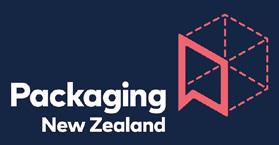



Label manufacturer and printer supplier Label Power has increased productivity following the recent installation of a Bobst Master M5 UV 430 flexo label and coupon press.
James Malone, founder and CEO of Label Power, told ProPack the Bobst Master M5 was chosen for its automation, versatility, and ease of use.
“We purchased the Bobst Master M5 for its ability to produce multi-layer coupon labels and the ability to perforate and sheet with its three die stations. In addition, the 430mm web width offers us better productivity than our 340mm wide presses, while still being easy to work with,” Malone said.
The Bobst Master M5 can print a variety of labels, as well as flex pack and light cardboard, delivering exceptional performance in terms of quality and productivity.
Installed at Label Power’s Brisbane facility, the Bobst Master M5 will be used for high quality label and film printing, peel and reveal coupon labels, as well as labels supplied in sheets following the introduction of a servo sheeter/stacker to the press.
“Previously, the widest label we could print flexo was 340mm wide; now we can print 430mm wide and print up to 10 colours in one pass. We have added a lot of strings to our bow with this new machine,” Malone said.
The Master M5 includes several automated features that take flexo printing to the next level in terms of productivity and quality, while reducing downtime and waste.
For Malone, one of the standout features of the press is the Print Tutor system that automatically handles set up and register, using a mark-to-mark detection camera on every printing unit, thereby allowing real-time monitoring and adjustment of print registration for enhanced accuracy, reduced waste, and faster job changes.
“The Print Tutor system is amazing and allows quick setup with very little waste, especially when combined with the short web path,” he said.
The Master M5 is also oneECG ready and equipped with the well-known flower technology for an easy, quick, and reliable job changeover.
The Bobst Master M5 is not the only recent addition to Label Power’s fleet – the company also recently installed a new 530mm wide 8 colour Omet Kflex with water cooled GEW LEO LED UV curing, which is understood to be the first in Australia. At Label Power’s Melbourne facility, the team also recently installed a MPS EF330 UV Flexo press and an additional ABG Series 2 Digicon that it moved over from its Brisbane plant.
“We are continually investing in extra capacity to serve the market,” Malone said.
Founded in 1996, Label Power has grown from a small startup into a leading name in the label printing industry. In addition to growing its production fleet, Label Power has also expanded its footprint in recent years. In 2024, Victoria-based label converter Action Labels & Nameplates was rebranded as part of Label Power. The move followed Label Power’s acquisition of Action Labels & Nameplates in 2020. At the time of the acquisition, Malone said clients would get a much more seamless service and the ability to deal with just one business, as well as an increased range of products and services.
“This merger will also allow businesses with access to a much wider range of label and tag stocks, materials as well as in-house label printing and cutting solutions. Our combined operations from Melbourne and Brisbane will ensure faster production and delivery. We are now a national company, so depending on where our clients are, we could dispatch either from Melbourne or from Brisbane. And we have stock of common dispatch labels and things in both locations so it’s quick for us to supply no matter where our clients are,” Malone said.
With the installation of the new presses Label Power is also looking for qualified flexographic label printers to join their team.
“The plans for Label Power are to continually grow the business and invest in more machines. There’s plenty that industry can expect from us in the near and far future.”
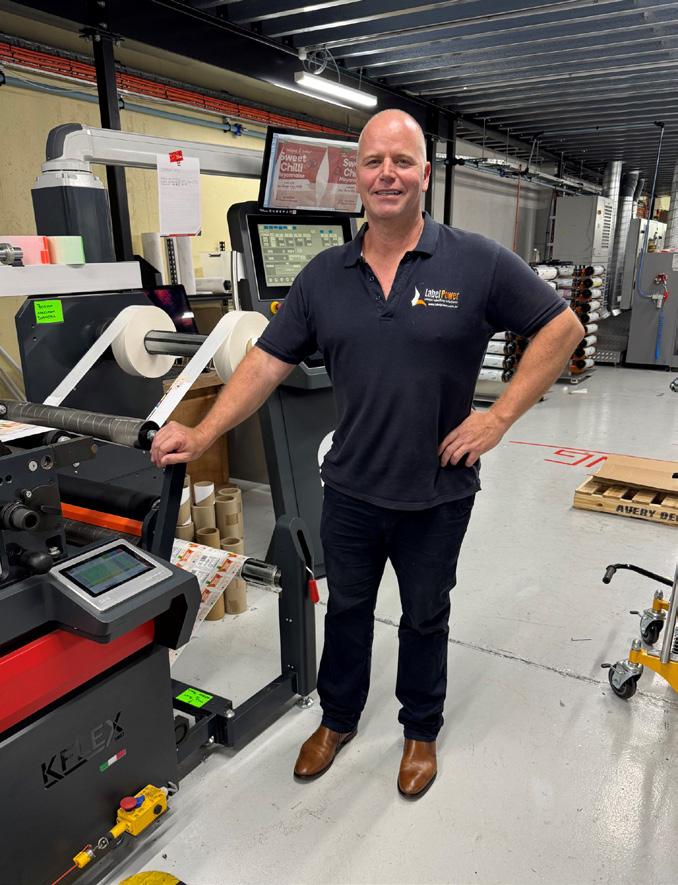



The Jet Press FP790 digital press could be considered to be three presses in one, able to:
•Print digitally, with all the benefits of digital production
•Print mainstream flexo jobs
•Print rotogravure quality jobs
To discover more, scan below:

Amazon Australia has stopped packing products in single-use plastic delivery bags and envelopes, replacing them with recyclable paper and cardboard alternatives.
Coupled with Amazon’s existing suite of recyclable boxes and tape, this means customers are now receiving orders from Amazon Australia’s distribution network in a recyclable box, bag, or envelope that can go straight into the household recycling bin, or with no added delivery packaging.
This includes items sold by Amazon Australia and third-party selling partners that use Fulfilment by Amazon (FBA).
The company said it has right-sized packages to match the products using less material overall and increased the amount of recycled content that goes into making them.
However, Amazon said there are still a few instances where customers in Australia may receive packages in plastic packaging:
• While Amazon controls the packaging for items shipped to customers direct from its own fulfilment centres, third party sellers can ship directly to
Integrated software and hardware solutions provider, Esko, innovator of digital front ends (DFEs) and workflow solutions, Fiery, and digital printing solutions provider HanGlobal/ HanLabel have come together to deliver a customised DFE for the LabStar series inkjet digital label presses.
This strategic collaboration integrates Esko’s colour management expertise, Fiery’s Impress DFE technology, and HanGlobal/ HanLabel’s digital label printing technology.
Together, the companies are addressing the evolving needs of label converters with an end-to-end solution that streamlines production workflows, enhances colour precision, and accelerates time to market.
The companies say the partnership’s centrepiece is the optimised compatibility between the LabStar series digital label presses and the combined Esko-Fiery solutions. This integration aims to empower label converters with superior automation,
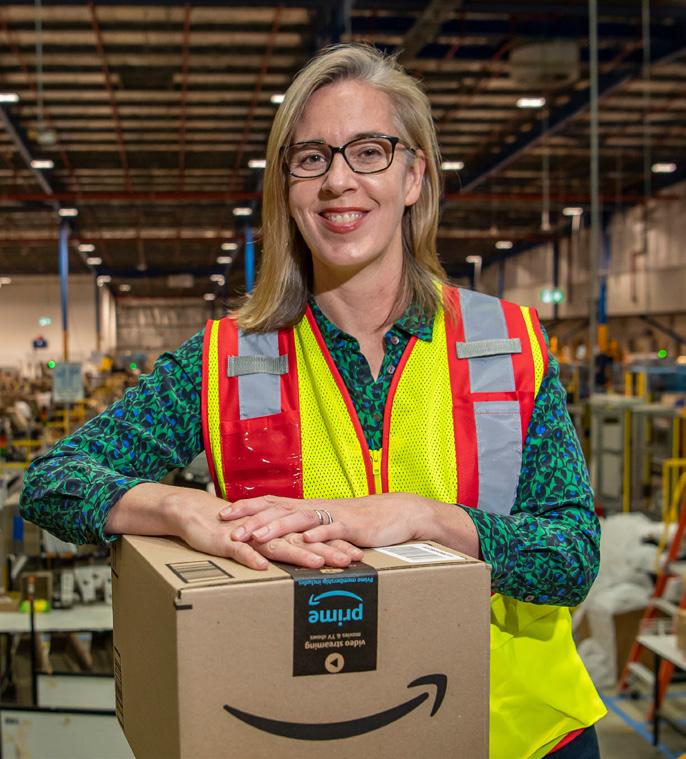
customers themselves, in which case Amazon does not control the packaging. Amazon shares its expertise on alternative packaging options and encourages sellers to use them.
• Plastic preparation material such as bubble wrap may still be used where necessary, for example to protect fragile items like glass or to seal liquid products such as shampoo and soaps.
• When a product comes in a single-use plastic bag from the manufacturer and the bag is suitable, Amazon will deliver the product to the customer in the manufacturer-supplied bag. This avoids
the addition of extra packaging.
In 2021, Amazon Australia replaced singleuse plastic air pillows with recyclable paper filler to protect goods during shipping, and in 2023 it reduced box weights by 25 per cent and label sizes by 50 per cent, to minimise waste.
Amazon Australia country manager Janet Menzies said moving to 100 per cent recyclable delivery packaging in Australia is a major milestone for the online retailer.
“We have removed all single-use plastic delivery bags and envelopes from our local distribution network. Customers are now able to easily recycle all their Amazon delivery packaging by placing it in their recycling bins.
“This project has been almost two years in the making, following a rigorous process of product development and testing to ensure the paper envelopes can also withstand the delivery process and customer orders arrive safely.
“We are proud of this progress but it’s just the beginning and we will keep innovating to improve our packaging.”
As part of its ongoing commitment to reduce packaging, Amazon Australia recently invested in three automated paper packaging machines that pack single products in paper bags that are made on demand for the item.
These machines scan items such as video games, kitchen gadgets, sports equipment, and office supplies – which were previously sent in boxes or plastic padded envelopes –and securely pack them in a paper bag from a selection of three different size options.

colour accuracy, and seamless connectivity, redefining efficiency and performance in digital label printing.
Announcing the collaboration on the first day of Labelexpo South China at the Shenzhen World Exhibition & Convention Center, Esko global partner ecosystem development director Dries Vandenbussche said, “By combining the strengths of Esko, Fiery, and HanGlobal/HanLabel, we are delivering unprecedented value to the label printing industry. Our integrated solution enables converters to achieve exceptional results faster and more efficiently than ever before”.
Fiery marketing and sales vice-president John Henze said, “Fiery’s industry-leading
DFEs deliver exceptional image quality, including precise rendering of any object – from barcodes to fine lines to text.
“The seamless integration of Esko’s colour management technology into our awardwinning Fiery Impress DFE enables Hanglory to unlock the full potential of the Labstar series, providing unmatched control, performance, and output integrity.”
HanGlobal and HanGlory Asia general manager and Jeak Wu said, “HanGlobal/ HanLabel is excited to partner with industry leaders Esko and Fiery to revolutionise digital label printing. Together, we are equipping businesses with tools to meet the highest standards of precision and efficiency”.
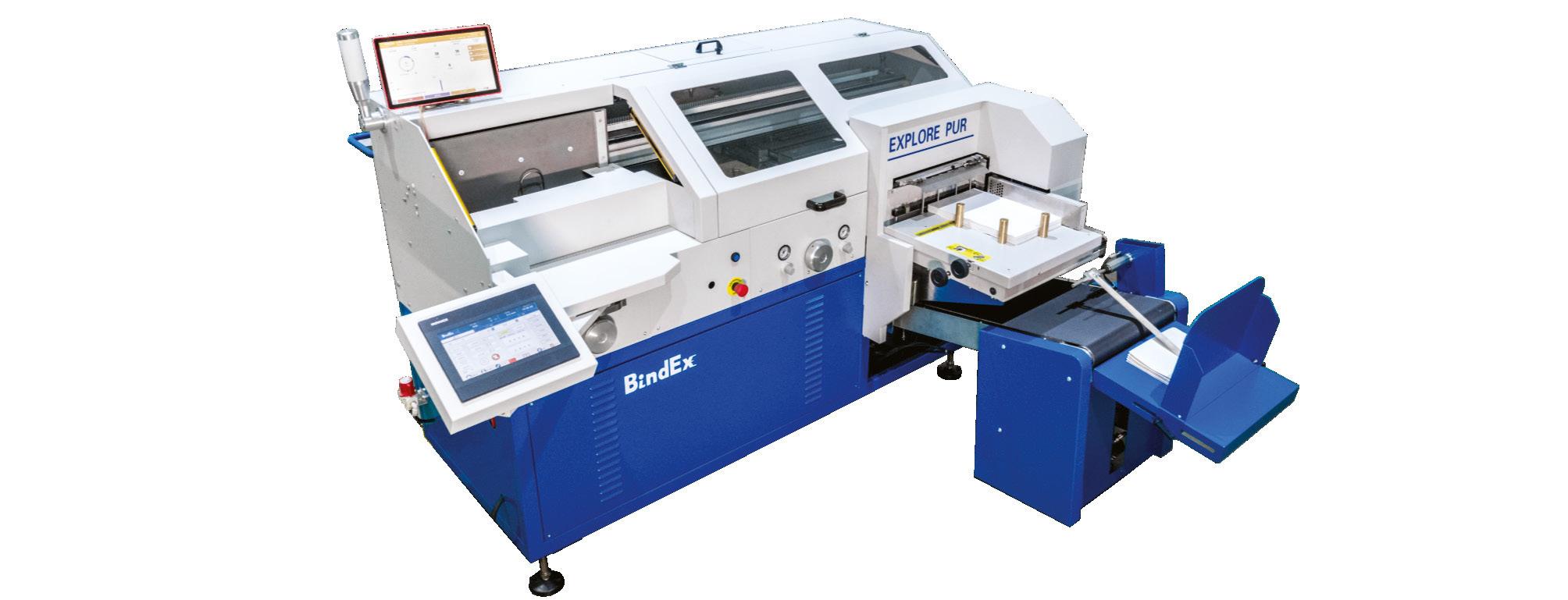
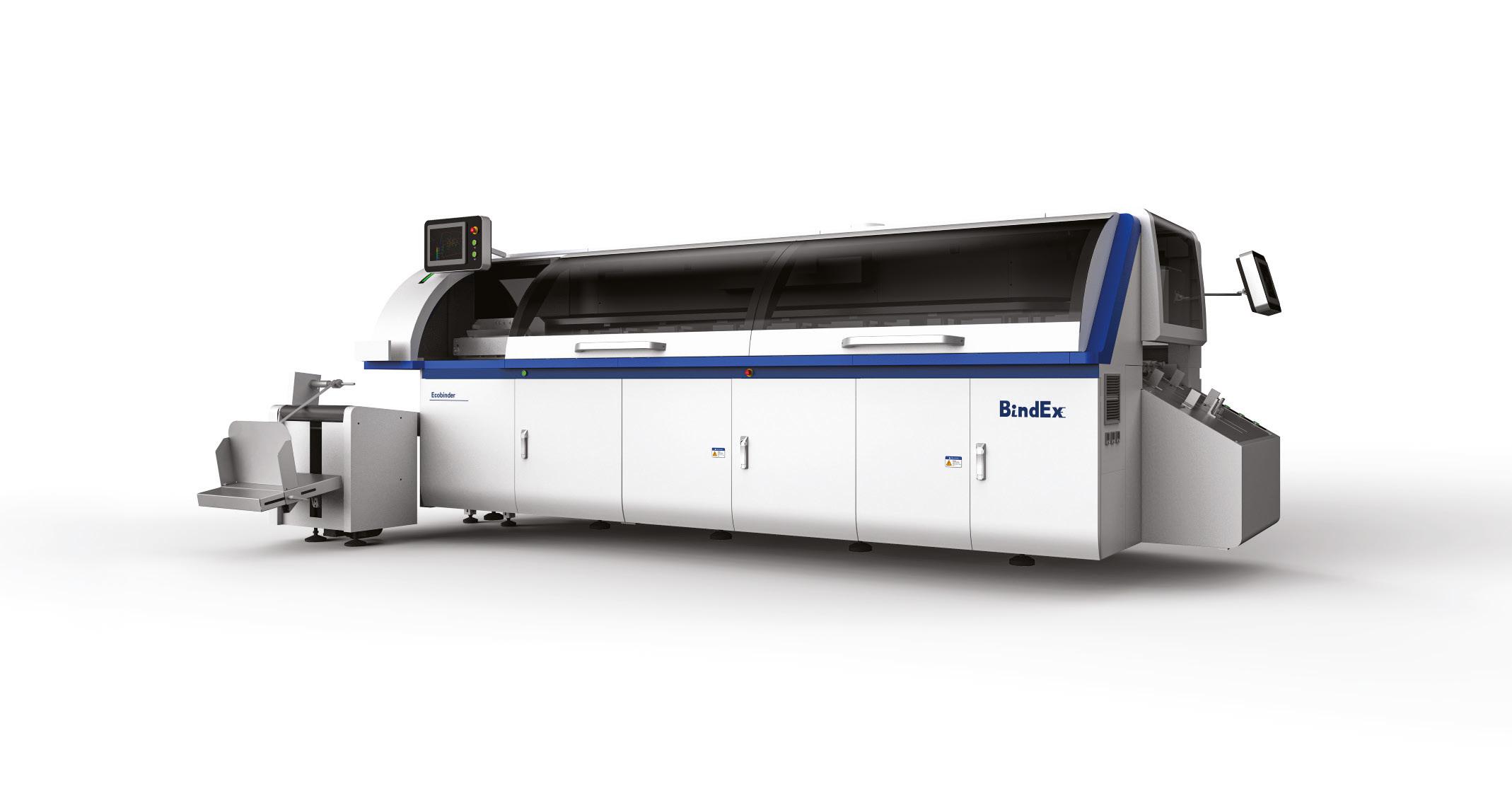

Koenig & Bauer is continuing on the path that it adopted in 2014 to transition from a unitary to a divisional group and is positioning itself in 2025 with a new segment structure.
It has initiated a group realignment, which includes the downsizing of its business segments, the exit of COO Michael Ulverich, and the appointments of Christian Steinmaßl to group management and Markus Weiss as CEO of the Paper & Packaging Sheetfed Systems (P&P) segment following the retirement of Ralf Sammeck.
The company said as a result of the “leaner structures”, the number of its segments will be reduced from three to two, namely P&P and Special & New Technologies (S&T). It added that its focus will remain on the high-growth packaging market.
Within the P&P segment, all the previous activities of the sheetfed segment will be consolidated within this division. In addition, the corrugated cardboard activities for the Chroma series bundled under the Celmacch joint venture, which were previously assigned to the Digital & Webfed segment, will be allocated to this segment due to the close
Visy, an Australian integrated recycler and re-manufacturer, recently partnered with two solar energy companies to install solar panels on select sites across Australia.
Visy worked with Energy Aware in Victoria to install a combined 2,400 KW of solar panels across six sites, including: Wodonga (food can), Shepparton (food can), Truganina (cardboard packaging), Kilsyth (branded cardboard packaging), Wodonga (cardboard packaging), and Dandenong (cardboard packaging).
In Queensland, Visy worked with 1K5° Commercial to install a 2,100 KW system on its Yatala beverage can factory – Visy’s largest solar system to date. The system was completed in December 2024.
Visy said the project will cut how much electricity six Visy sites take from the Victorian electricity grid by seven per cent and slashes the Yatala beverage can site’s consumption in Queensland by 23 per cent.

technological and customer overlap between folding box and corrugated cardboard producers. The activities of the Koenig & Bauer Durst joint venture will continue here.
This segment will be specialising in end-toend solutions for the high-growth folding box and corrugated cardboard box markets, addressing all aspects such as the preprint stage, printing with an integrated digital workflow and post-print processing.
Koenig & Bauer CEO Dr Andreas Pleßke said, “The group’s top priority is to align itself with its customers and markets and to streamline decision-making paths within its business units”.
As for the S&T segment, it will consolidate
the previous activities of the special segment (banknote and security printing, systems for industrial marking and coding and special systems for metal and glass/hollow container direct printing), as well as the remaining activities of the former digital & webfed segment. This includes the special packaging printing applications, primarily web digital and flexo web printing.
Likewise, the partnership forged between Koenig & Bauer and the Volkswagen subsidiary PowerCo for the development of dry coating for battery cell production will be integrated in this segment.
New applications (inspection systems and protection technologies) will be spun off from security printing into an independent Vision & Protection business unit.
The restructuring of the Koenig & Bauer group will also result in changes to central responsibilities for operations as well as crosssectional functions. The company said some of these will be re-assigned to the segments to address the individual requirements of the various markets more effectively.
Consequently, the previous role of a central group COO has been removed –Ulverich has stepped down from the executive board. In addition, Koenig & Bauer has hired Christian Steinmaßl, who brings more than 25 years of experience in the paper and packaging industry, in a key role within the new S&T segment. He will be holding responsibility for production, the Vision & Protection and Kyana (formerly Digital Unit) business units and operational shared services within the group.

Visy general manager of energy Ryan Santowski said the company is always looking for ways to innovate and improve the sustainability of its products.
“While many of our products have up to 100 per cent recycled content – made from household and business recycling – we’re
always looking for ways to further reduce our environmental impact and energy footprint,” he said.
“Installing solar panels on our sites is one of the many ways we continue to invest in green power and improve the sustainability of the food and beverage packaging we make.”
The World Packaging Organisation (WPO) has named the winners of the WorldStar 2025 Awards, with Australia and New Zealand companies receiving the fourth highest number of wins in the world behind Japan, Germany/Austria and India.
ICEE Technology Group, Integrated Plastics, and Caps & Closures were recognised across multiple categories.
In addition, Mars Foods & Wellman Packaging and Thermocup and BioPak were recognised for two separate products.
The 2024 WorldStar Packaging Award winners for Australia and New Zealand are:
Packaging Materials & Components
• Woolworths Pad-free rPET meat trays with ‘Leave Attached’ film for kerbside recycling (Pact Group, Woolworths, Hilton Foods, and Cleanaway)
• IMH PET Integrally Moulded Handle (Integrated Plastics)
• Home Compostable Container range (BioPak)
Food
• Naked Rivals
• Costa Group Premium Grapes paper bag (Costa Group & The Packaging Hippie)
• Don Deli Cuts (George Weston Foods)
• Cryovac Flexprep Portion Dispensing Pouches for McDonald’s Australia (Sealed Air)
• Masterfoods Squeezy rPET sauce bottles (Mars Foods & Wellman Packaging)
Household
• Green Action Dishwashing Liquid (Trendpac)
• Thankyou EzyPour + Refill (Caps & Closures)
Health & Personal Care
• Only Good Hand & Body Wash (Apex Brands) New Zealand
• Thankyou EzyPour + Refill (Caps & Closures)
• 100% Paper Packaging Film for Broc Shot (Close the Loop Group)
E-Commerce
• bouncee Reusable Insulating crates (ICEE Technology Group)
Labelling & Decoration
• The Art series and Indigenous Art series BioCups (BioPak)

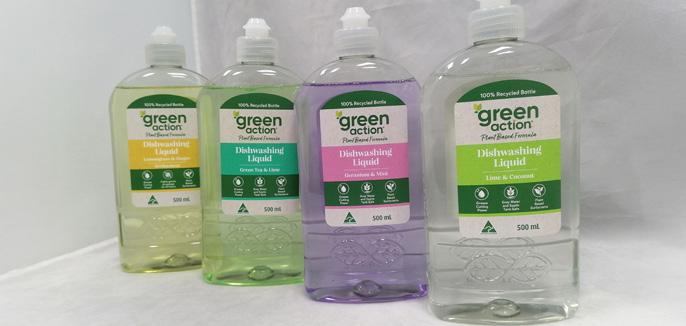
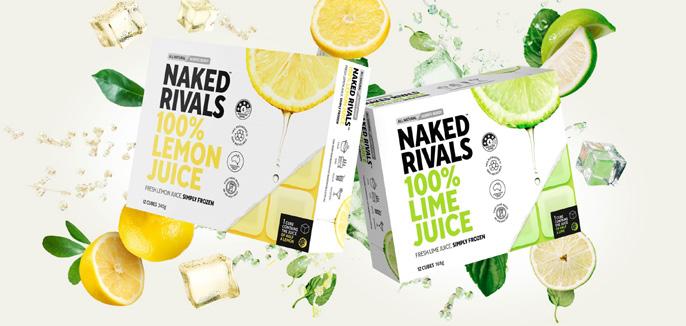
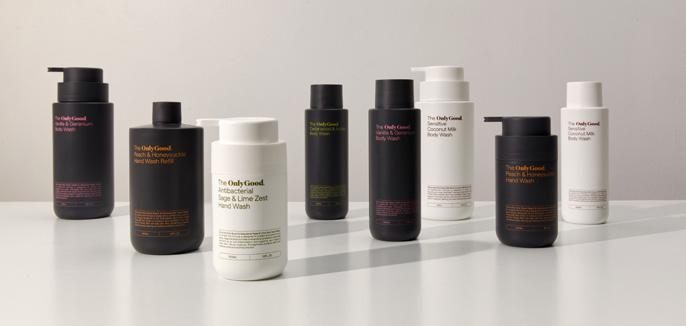
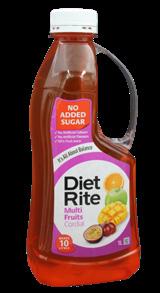
Some of the winning entries from A/NZ
Non-Alcoholic Beverages
• Thermocup (Wellman Packaging)
• IMH PET Integrally Moulded Handle (Integrated Plastics)
Transit
• bouncee Reusable Insulating crates (ICEE Technology Group)
The 2025 round of WorldStar Packaging Awards attracted 560 entries from 40 countries, with 40 judges determining 230 winners.
The Australasian Institute of Packaging (AIP) executive director Nerida Kelton said, “This is the fifth year in a row that the A/NZ region has maintained a top five spot against some very tough competition from extremely large countries.
“What makes this global recognition even sweeter is that 50 per cent of the packaging
that was recognised was from first-time entrants into the WorldStar Packaging Award program including Naked Rivals which is a start-up, Only Good Hand & Body Wash (Apex Brands) from New Zealand, Green Action Dishwashing Liquid (Trendpac), bouncee Reusable Insulating crates (ICEE Technology Group), Costa Group Premium Grapes paper bag (Costa Group & The Packaging Hippie), IMH PET Integrally Moulded Handle (Integrated Plastics) and Don Deli Cuts (George Weston Foods).
“We are extremely pleased that A/NZ PIDA Winners have been internationally recognised with 18 awards across eight categories including: Packaging Materials & Components, Food, Household, Health & Personal Care, E-Commerce, Labelling & Decoration, Non-Alcoholic Beverages and Transit.
“As only winners from the Australasian Packaging Innovation & Design (PDIA) awards are eligible to enter the prestigious global WorldStar Packaging awards, the global recognition is a testament to the strict criteria and judging process of our annual PIDA Awards program and the supporting work undertaken by the AIP to ensure that our winners enter the WorldStar Packaging awards each year.
“We look forward to celebrating the winners on the 30 May at the WorldStar Packaging Award ceremony which will be held alongside of Ipack Ima, Milan Italy.”
During the award ceremony, WPO will also announce the winners of the special categories, including the President’s Award, Sustainability Award, Marketing Award, and the Packaging that Saves Food Award.
“The incredible number of entries and winners in this 2025 edition reflects the credibility of this global award, the high level of the competition, and the exceptional quality of the packaging solutions submitted from around the world,” WPO president Luciana Pellegrino said.
“The participating packaging also showcases the profound evolution of the global packaging industry, driven by innovation, creativity, technology, marketing, digital transformation, and sustainability. It is evident that our industry has embraced current challenges and is prepared to grow continuously and sustainably, meeting the expectations of the modern, connected consumers.”
Developer of productivity tools for labels and packaging, Hybrid Software, and digital cutting and creasing systems developer, Highcon, have inked a collaboration for digital die cutting workflow efficiency.
The partnership aims to elevate the digital die cutting workflow for packaging and display converters by integrating Hybrid’s renowned PACKZ software, offering full PDF support, into Highcon’s Digital Die Cutting Workflow Package (DWP).
The Detmold Group has launched its new global sustainability goals, scaling up its targets to source more forest-certified fibre, increase recyclable content in products, maximise recycling and landfill diversion, source increased renewable electricity, and achieve net zero emissions.
It said the new sustainability goals ensure the group continues to support customers in making responsible and informed packaging choices by providing both immediate and longer, further-reaching commitments to sustainability globally, with staggered targets from 2025 to 2050.
Detmold Group CEO Sascha Detmold Cox said the new sustainability goals focus on four key pillars:
• Climate: Reducing emissions aligned with global targets
• Nature: Protecting plants, animals, habitat and human health
• Circularity: Reducing waste and operating in a circular economy to eliminate landfill
• Governance: Ensuring transparency and accountability for performance
“Sustainability has been a cornerstone of the Detmold Group and our Detpak and PaperPak brands for more than 75 years, supporting our purpose of making a positive impact for our people, partners, and our planet. The Detmold Group’s commitment to sustainability, including reducing waste and designing packaging ranges to be reusable, recyclable and compostable, underpins our dedication to creating a better future and supporting our customers to make sustainable choices,” Cox said.

This partnership also aims to deliver more streamlined processes, increased precision, and enhanced workflow integration, empowering operators across production sites.
At the core of this collaboration is a custom-designed version of the PACKZ Engine for Highcon, introducing a fully integrated PDF workflow tailored for the digital die-cutting process.

As part of the new sustainability goals, the Detmold Group undertook its first Carbon Disclosure Project (CDP) environmental performance disclosure in September 2024.
Annual CDP reporting, along with implementing environmental management systems across the group, will drive continuous improvement and support the integration of its environmental strategy.
Cox said the Detmold Group had worked with strategic customers to increase recycled content in products, continued to invest in research and development including its laboratory testing capabilities; and progressed towards its target of producing 95 per cent of its stock range as reusable, recyclable or compostable.
Aligned with its new sustainability goals, the Detmold Group has also flicked the switch to solar energy at its largest production facility in Heshan, China. As its first international solar project, the Detmold Group has installed around 1,000 solar panels over 2,200 square metres, which will generate more than 574 MW of electricity annually. The Heshan installation has closely followed the installation of rooftop solar at the Regency Park manufacturing site, aligning with its goal to source 30 per cent of its electricity from renewable sources by 2033 and reduce Scope 1 and 2 carbon emissions by 55 per cent.
By advancing artwork handling, highquality previews, and automated XML export capabilities, this collaboration enables packaging converters to seamlessly integrate Highcon’s digital solutions into their workflows, simplifying setup while accelerating production timelines.
“Our partnership with Highcon is all about empowering the packaging industry,” Hybrid Software chief commercial officer Bert Van der Perre said.
“Finishing is a vital step in packaging production, and this collaboration streamlines the process, delivering greater efficiency and precision for our customers.
“With Highcon’s digital die-cutting systems deployed worldwide, this collaboration with Hybrid Software enables production teams to achieve faster setups and top-quality output. Together, we’re optimising production workflows for digital die cutting,” Highcon product vice-president Haim Veig said.
The Detmold Group 2025-2050 sustainability goals, in detail, are: Climate: Reducing emissions aligned with global targets
• Reduce carbon emissions (scope 1 & 2) by 55 per cent by 2033 (2023 baseline and targets to be SBTi approved by 2026)
• 30 per cent of electricity from renewable sources by 2033
• Net zero emissions by 2050
Nature: Protection of plants, animals, habitat and human health
• More than 95 per cent of fibre sourced from FSC or PEFC certified sources or certified recycled content by 2030
• No deforestation and forest degradation across its supply chain by 2030
• Reduce waste use across operations YoY
• 100 per cent of products with no intentionally-added PFAS Circularity: Reducing waste and operating in a circular economy to eliminate landfill
• More than 95 per cent of stock range designed to be reusable, recyclable or compostable
• More than 50 per cent recycled content in packaging by 2030 (by weight in nonfood grade primary, secondary & tertiary packaging)
• 10 per cent reduction in waste generated by 2030 (2023 baseline)
• More than 95 per cent of waste (by weight) diverted from landfill Governance: Transparency and accountability for performance
• Annual CDP performance disclosure and progress reporting against these goals
• Group environmental management system certified to ISO 14001 across all sites globally
• Full compliance with packaging and environmental legislation in markets in which Detmold operates
• Raw materials procured from noncontroversial sources.

Since taking the helm at Aucklandbased Fivestar Print in 2012, Rajesh Mudundi has steadily built the company into a diverse business offering a range of services including design, marketing, printing, and installations.
The company’s team of 10 staff produces a range of print from small format and large format digital to digital labels and packaging solutions.
Recently, Fivestar Print installed an Epson SurePress L-4533AW digital label press, supplied through Fujifilm Business Innovation (FBNZ).
Rajesh said, “This installation is the next logical step in our label printing journey. We had begun with a second-hand machine, also an Epson, the SurePress L4033 digital label press, and it served us well. While we have been patient in growing the business, we needed to step up our labels production and the Epson SurePress L-4533AW digital label press is proving the ideal solution. Our production has increased, and it is great to have this label press that has the capability to handle short, medium, and long-runs.
“With the Epson SurePress L-4533AW digital label press, we can be more creative. It offers us a white ink option that changes our label production. For example, we can now complete a greater variety of jobs. So, it means more work,
especially for jobs like specialty labels, wine labels and labels with metallic stocks.
“The speed has also increased but our ink volumes have shrunk compared to the previous machine. Epson has changed the ink system. I think we are the first company in the country using this new ink system and it is making a substantial difference. Another benefit is the greatly improved colour gamut. The Epson SurePress L-4533AW digital label press gives us 10 colours. Epson quality is well known across the industry. We can achieve over 90 per cent of Pantone colours.
“Maintenance is also easier with cleaning more automated. It performs a threeminute self-clean and that saves production time and ink. The new RIP is excellent. We changed out our old third party RIP for the Epson software, which is bundled with the machine. It has made a significant difference and is delivering excellent results.”
Rajesh appreciates his partnership with FBNZ. He said, “I have known Paul Thomas since 2011 and Fivestar’s relationship with FBNZ goes back to 2012. We have shared our journey with them.
“Our relationship with FBNZ has helped change the dynamics of this business and boosted the company to reach the next
level tier of clients. As we have installed progressively superior technology and solutions, we have been able to successfully compete for higher jobs. Each investment we have made has given me the confidence to make these steps in our business.
“We installed an Iridesse in 2019 and with FBNZ support, we have grown the company through smart digital printing and their excellent technology and support. FBNZ has always had our best interests at heart.
“From our Iridesse and our large format to our labels and packaging production, we have developed our capability to complete niche work, and we proudly call ourselves a digital printing company. We can renew our contracts with our customers because of the quality of jobs we are doing. We are growing, but without the label press we would not be able to retain those contracts.”
Paul Thomas, graphic arts account manager at FBNZ, said, “Fivestar invested in its business through the COVID-19 pandemic. It has been impressive to see Rajesh and his team grow Fivestar from the small shop in Dominion Road to these large premises.”
Fivestar Print focuses on continuous improvement and is always customerfocused. Having added a design studio and enhanced its portfolio with corporate clients, the business recently changed its logo and branding to reflect change.
Rajesh added, “There are a lot of companies that can print but they can’t help their customers with marketing and design. We can deliver initial value to them with the speed and quality of our work, and we can add even more value to them by showing them how they can stand out. To make that happen, we need to do more than sell labels; we need to make a difference to their business.
“Diversifying our business, not sticking to the same thing, means we will do jobs of all sizes. With labels, we sit in a niche market, especially in terms of volume. With the Epson SurePress L-4533AW digital label press, we can do small-runs and for timeline efficiency, we can do fast turnarounds.”
The company is at the top of its game with a new, bigger site and a multi-million dollar investment in machinery, and has more planned for the business in 2025


Steven Todisco, owner of Victoriabased Affinity Print, has great plans for his company, and has been executing them one step at a time.
Most recently, the company celebrated 50 years in operation, and a move into
a new, larger facility which houses modern investment in folding carton machinery.
Affinity Print is a packaging company that provides its clients with a point of difference, out of the box thinking, and quality excellence in offset and digital packaging.
With a full end-to-end-solution, it specialises in fast turnarounds and short-run, high-end packaging, by running on digital, offset, and UV printing complemented by a full bindery.
The company states its point of difference is its ability to offer embellishing and finishing services in-house. It is also proud of its environmental accreditation and impact on the environment, having been certified with Eco Warranty EMS.
Some of its more prominent areas of play are in the beverage, pharmaceutical, and beauty packaging segments.
Todisco himself is no stranger to the printing and packaging industry. He comes from a family that has a long history in print, and great expertise in the trade.
As a second-generation printer, Todisco started his career at Cleveland Printing, which was owned by his father, Ralph Todisco.
Fast forward to 2005, and after stints in several other printing companies, Todisco

decided it was time for him to stand on his own two feet – he became the owner of Affinity Print, which was created in 1973.
“I have more than 30 years’ of experience in the print industry, having worked at several different companies. I have gone from working for my family’s print business to running my own,” Todisco said.
“Affinity Print’s first owner, Terry, had passed on and the two people that took over it pretty much ran it into the ground. I then bought Affinity Print from the duo in 2005, and we went from printing one business card order a week to becoming a high-end boutique packaging company.”
From commercial to packaging
The transition from commercial printing into the packaging space was a natural transition for Todisco and the team at Affinity Print.
“Packaging was a market that we knew could be our expertise. Moving into this space was a natural progression for us –the commercial market was shrinking year-on-year, so we made the decision to get into packaging. We’ve been in packaging ever since, and our growth has just been consistent and continuous,” he said.
“Affinity is one of the few printers in the country to run a full in-house packaging solution, with foiling, embossing, coating, and UV capabilities.”
Affinity Print, which employs 20 staff, excluding casuals, is also one of a few companies that produces bedding labels in the country.
“That segment has become one of the areas of our specialisation, and we have brought new technology in to modernise that space – it used old-school offset printing methods which we have now modernised with digital printing and foiling,” he said.
The company also amped up its specialisation in UV printing, especially bumper labels and printing on plastics, with the purchase of Cain Colour in July 2020.
“We bought Cain Colour as an add-on –to have UV capabilities for our packaging.

Cain Colour ran offset presses, but in its case specialised in UV printing. Having Cain Colour in our fold has boosted Affinity Print’s capacity and capabilities,” he said.
Just four years after the acquisition of Cain Colour, Affinity Print has been subject to growth on a tremendous scale, and as a result, needed to move into a bigger premises.
“When we started, we had a small, 300 sqm factory. Today, we’ve moved into an 1800 sqm factory that’s 10 minutes down the road from our old factory in Cranbourne West,” Todisco said.
“We were on the hunt for a bigger factory for some time, as we needed a unit that was of a particular size and had the power to keep our machines going. What this new factory also meant, was it allowed us to upgrade our machinery expand our inventory in packaging.”
The scale of projects that Affinity Print has been able to produce has also improved.
“One of our biggest clients, for example, came to us with a concept and a few containers, and we ended up putting spot UV on it, in addition to gloss, foiling and shape cutting. And it also had a specialised closure on it. This client – a multi-national company – was very impressed with our capabilities,” he said.
“We’re also in the midst of creating some interesting packaging projects for a Singapore-based company and will be shipping it over soon – we’ve got plenty of clients worldwide to keep Affinity busy.”
And now, having turned 50 years old this year, Affinity Print is celebrating its many
milestones, with Todisco saying there are more to come and that the industry can definitely expect more from the business.
“While the industry is slowing, we are growing. This factory is a new place for us to call home for the next chapter, and it’s very exciting times for the business,” he said.
“Turning 50 is a huge milestone for us, because not many businesses reach that stage these days. That’s because they don’t keep up with technology, or they don’t move forward with time. Businesses turning 50 years of age, these days, are going to be few and far between – other than the big multinationals.
“We want to enhance our customers’ experience with us, and this forms an integral part of our continuous improvement to quality assurance. We are also actively managing our impact on the environment in key areas including resource usage, landfill and greenhouse gas emissions, as our commitment is to reduce our environmental footprint,” Todisco said.
“Our size and investment in state-of-the-art equipment means we can offer our clients fast quote turnarounds, client focussed account management, high levels of project understanding, on-time delivery, online ordering, and electronic or hard proofing.
“We also have a solution for the provision of online services, and the process efficiencies this provides in the areas of web-to-print, ordering, warehousing and distribution of collateral.
“What we can offer the market is of the same level, if not better, than some of the ‘big boys’, which is fantastic for a family-run company.”
Ali Farid and Shaleen MacGregor, the duo behind PakPro, have a goal to take the NSW-based packaging business from strength to strength in the coming years
Ali Farid and Shaleen MacGregor, the business partners behind PakPro at Silverwater, NSW, are testing their transferrable skillsets by recently becoming entrepreneurs in the packaging industry. Having recently taken ownership of PakPro at the end of 2023, the duo has a strategic plan in place to scale the business to new heights.
PakPro, formerly known as Packaging Processors, has been a trusted name in the packaging industry since the 1980s. Over the four decades that it has been in operation, despite the change in ownership, it has provided – and continues to provide – a high level of service to customers and has maintained a strong reputation within the industry.
PakPro’s focus remains on delivering trade finishing by providing a diverse and high expertise in cutting, folding, and gluing services. This includes die cutting, window patching, folding and gluing (straight line, sleeves, crashlock, pillow pack, wallets, and folders), as well as machine double sided taping.
The business also offers consultation to its customers in optimising packaging design and sourcing tooling, and prides itself in being able to provide fast quoting and conversion turnarounds in the industry.
Its customers are wide ranging – from cardboard packaging suppliers to digital printers offering small volume custom boxes, envelopes and key card holders.
PakPro has had the privilege of working on a variety of impactful projects for its clients – from consulting with complicated designs to streamlining trade finishes, rushed orders and new product launches. At the same time, the business has supported customers during their transitional period of site relocations, resources shortages, peak periods capacity, and regular support.
Farid and MacGregor entered the packaging industry and took over the operations of PakPro after holding director level positions at large FMCG multinationals.
Farid’s background in engineering and more than 20 years of extensive experience in the operations and commercial fields has enabled his engagement with customers,


resulting in business partnerships and quality service commitments.
MacGregor’s finance qualification and more than 20 years of expertise in compliance, financial and risk strategy, legal and compliance, and stakeholder management has enabled the re-engineering of PakPro from being a traditional business into the current operational/commercial environment it is today.
Farid and MacGregor’s immediate focus for PakPro is to bring awareness to the packaging and printing industries of its core and exclusive capabilities and services at a wider scale.
“We want to showcase to the market the reasons for choosing PakPro as their first choice for trade finishing. We also intend to invest in technology and software to increase our response to market,” Farid said.
“Medium- to long-term, we plan to position PakPro as the solution for business continuity planning, making us the business partner and outsourcing and contract manufacturer of choice for printing/packaging companies and brokers in the industry.”
The packaging industry is no different to other industries and is undergoing significant disruption driven by sustainability, technology, and changing consumer preferences. Key trends impacting the operations of PakPro include:
Eco-friendly packaging: With increased consumer and regulatory pressure to reduce plastic and waste, Farid and MacGregor find there is a clear demand for biodegradable, recyclable, and compostable packaging solutions which creative cardboard packaging businesses can continue to thrive in.
“As more businesses prioritise ecofriendly alternatives, we’ve seen an increasing interest in recyclable and biodegradable packaging solutions – a trend we are actively supporting by transitioning from plastic to cardboard containers for food service and retail,” Farid said.
“In addition, the beauty segment has seen new entrepreneurs emerging with innovative, sustainable packaging.”
Smart packaging: The integration of digital technologies such as QR codes, tracking systems, and anti-counterfeit solutions, which is revolutionising the way businesses manage and engage with their packaging.
Automation and efficiency: Businesses are seeking automated packaging solutions to reduce costs, improve productivity, and minimise waste.
E-commerce and cashflow: Many packaging and printing companies continue to operate using traditional business models. By integrating e-commerce platforms and payment gateways, businesses can enhance agility, streamline operations, and significantly reduce outstanding collections, improving overall cash flow efficiency.
“At PakPro, we’re embracing these trends by staying ahead of technological advancements and sourcing sustainable solutions that align with our clients’ goals. We’re committed to helping businesses navigate this changing landscape and aim to implement solutions that will futureproof their operations,” Farid said.








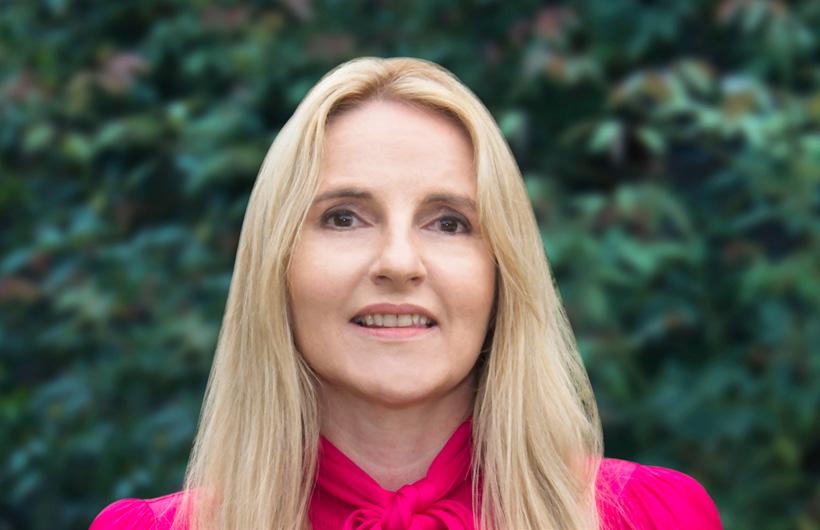




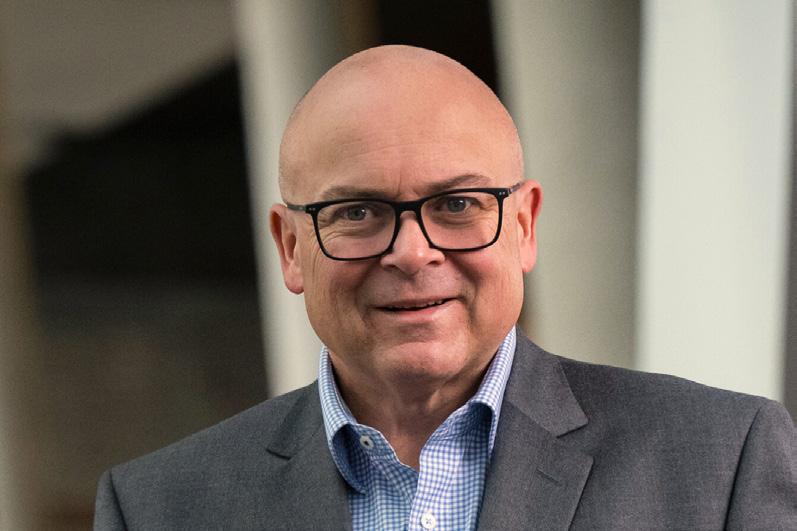
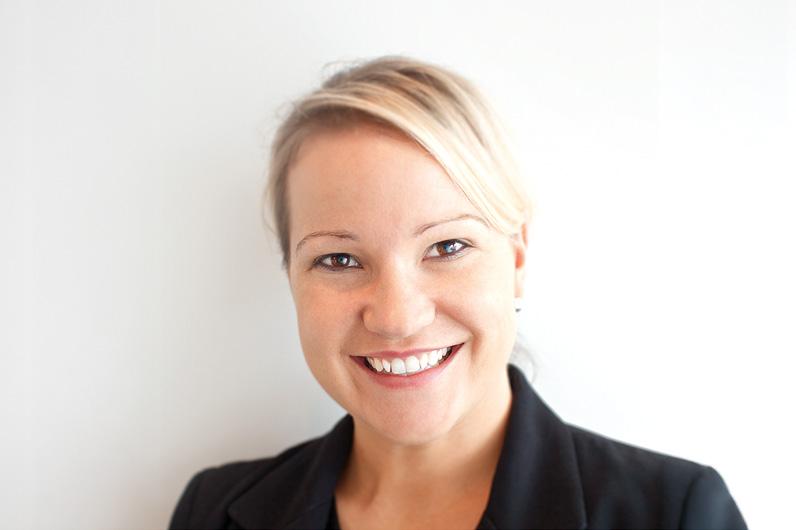

024 was a pivotal year for the labels and packaging sector. We witnessed strong recovery across the board, with demand continuing to grow for sustainable label and flexible packaging solutions.
This was evident in the growth of digital printing press sales we forecast, with customers such as Queensland-based Ultra Labels leading the charge with its purchase of three new HP Indigo platforms to join its existing fleet, including the latest model HP Indigo 200K for the growing digital flexible packaging segment.
A key highlight for the year was the innovation driven by automation and smart technologies, such as AB Graphic International’s ABG Connect software simplifying and automating the label converting process, and HP Indigo’s AI intelligent factory, enabling businesses to improve efficiency and stay competitive.
However, challenges such as supply chain disruptions, rising material costs, and meeting sustainability demands put significant pressure on businesses, compelling them to adapt quickly. Despite these hurdles, our industry continues to demonstrate resilience and innovation, driving growth and meeting the everevolving customer expectations.
To remain relevant, many businesses further embraced digital transformation and automation. Investments in technologies like HP Indigo and smarter, automated
finishing equipment has allowed them to reduce lead times, enhance customisation, and meet shorter production runs.
Collaboration with partners and an increased focus on sustainability, including recyclable and biodegradable materials, also helped maintain a competitive edge.
The packaging landscape in 2025 will continue to be shaped by sustainability and personalisation. Sustainability will continue to dominate as a key trend, with more stringent regulations driving innovation in eco-friendly materials and processes and flexible packaging formats.
Digital printing will play an even greater role in enabling customisation and faster time to market, particularly for brands looking to engage consumers directly. Brands will lean further into digital printing for targeted campaigns and shorter run lengths, keeping pace with changing consumer expectations. As both industry and technology evolves, we will see the drive to shorter runs and digital automation re-shaping the flexible packaging space.
In addition, businesses should explore automation in their workflows to reduce waste and labour costs while maintaining quality. The rise of AI-driven workflow automation will streamline production, enabling better cost efficiency.
Also, the demand for premium and personalised packaging – especially for
e-commerce and luxury goods – presents significant growth potential.
However, challenges such as rising input costs, talent shortages, and the rapid pace of technological change require businesses to remain agile and adaptable. While the spotlight on the US and the volatile Australian dollar may create uncertainty for some businesses to invest, it also creates opportunity for others to get ahead of the game.
We anticipate breakthroughs in sustainable materials, including advancements in compostable and recyclable substrates at this year’s tradeshows. Innovations in digital finishing, such as digitally printed embellishments, and AI-powered workflow solutions are also likely to take centre stage, alongside technologies designed to reduce energy consumption and carbon footprints.
Currie Group’s primary focus for 2025 is to continue to empower our customers with innovative, sustainable, and efficient solutions. We aim to continue expanding our technology offerings while strengthening our partnerships with global leaders like HP Indigo, ABG, OMET and others.
Our business has evolved over time to meet the changing needs of our customers and that means continuing to strengthen our portfolio. This not only means additional brands such as MAAN Engineering (linerless coating solutions) and JetFX for digital embellishments joining our label portfolio, but strengthening our offering in the flexible packaging segment with exciting news to be announced in the first quarter of 2025.
Additionally, we’re committed to supporting customers in meeting their sustainability goals by introducing ecofriendly technologies and processes. We’ll continue to prioritise partnerships with manufacturers that deliver ecofriendly solutions, including reduced waste technologies and energy-efficient systems.
A key focus will be our collaboration with the HP Planet Partners Program and Close the Loop initiatives dedicated to recycling and reusing printing hardware and consumables. We’re also working closely with customers to help them achieve their sustainability goals through education and tailored solutions.
It’s evident that the labels and packaging industry stands at an exciting crossroads. With innovation and sustainability at the forefront, there’s immense potential to shape a future that’s not only profitable but also responsible. By working collaboratively and embracing new technologies, we can overcome challenges and lead the way in creating a sustainable, consumer-centric packaging landscape.

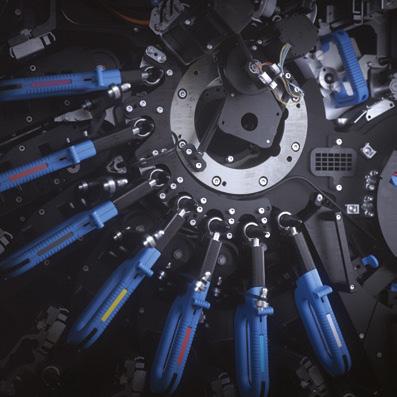






Durst is currently present across a broad cross section of the digital packaging market from labels to flexibles to folding carton and corrugated. In 2024, Durst Oceania continued to grow its install base of labels and packaging machines in Australia and New Zealand.
Converters have chosen Durst because they are forward-thinking, young, modern, and entrepreneurial businesses and they see us as the perfect partner for the future of their fast-growing business. We have found traditional converters remain apprehensive and challenged when it comes to embracing new digital inkjet technology, and this lack of agility represents a potential risk for their businesses.
My advice is for the industry to take the leap and observe the decisions made by your competitors in Australia and overseas who are reaping the rewards that digital inkjet production delivers.
I believe 2025 will be defined as the year when mainstream packaging businesses decide if they will choose to embrace new digital inkjet technology coming to market.
When Durst co-owner and CEO Christoph Gamper spoke at the ProPack Packaging Forum in Sydney last year, he made a very important statement that reinforces this point – digital printing is no longer wearing its baby shoes.
This is now the time for packaging converters to educate themselves and no longer treat digital as just an add-on in their business,
or as a smaller part of their business. Digital inkjet is the future of packaging.
Locally we are seeing strong, profitable, and viable businesses that have digital inkjet printing in both labels, flexibles, and folding carton packaging – this is a massive sea change for the industry.
The cost of print and the cost of ownership has now hit a sweet spot as the demands of customers have changed and so too have the run lengths, which is ideal for digital inkjet production.
My advice is, don’t miss the boat and the competitive advantage that comes with embracing new technology. As your clients find out they can order packaging in a different way, this will progressively become a game-changer.
Traditional large packaging converters have always demanded high volumes as that was previously the most efficient way – normally one design with an incredibly high run and then brands would order from that volume.
However, now with digital technology, customers can print the precise amount on almost a weekly basis. Also, you must bear in mind that this type of digital production has no run-up, which means there is less time in setting up the machine – making it far more efficient to run.
In terms of sustainability, with digital inkjet production there is zero wastage. This is becoming increasingly important for
external customers. More and more major brands want to know what converters have in place in terms of their sustainability plan when it comes to printing.
New laws coming into effect across the European Union will see the introduction of a sustainability audit for every business. At Durst, we have been conducting this audit for the last two years and it is only a matter of time before Australian businesses will be expected to present the same annual documentation and reporting.
Regardless of this, sustainability credentials will be increasingly demanded from end customers, therefore converters will need to have a solution that ticks this box.
Converters will be better off dictating the future rather than following how the industry has operated in the past. Progressive customers are not looking to work with converters or with machinery that is 20 or 30 years old and in this current business environment, replacing like for like with a new machine is no longer a smart option. Don’t work harder, work smarter.
Durst offers products in its labels and flexibles portfolio – from the Tau RSC-E to the Tau RSCi, measuring up to 510mm in width and delivering prints of up to 80m/min at 1200 dpi.
The Durst Omet K-Jet hybrid option offers the same speed and width with flexographic integration.
The Durst folding carton and corrugated portfolio starts with the P5 Pack through to the SPC130 high speed corrugated printer, producing up to 100m/min. And at the top end, we offer the Koenig & Bauer Durst VariJet 106 folding carton machine with amazing speed and water based technology that complies with all global food standards for printing.
Durst is truly a one-stop shop – not only do we have the hardware, but we also have the software to manage a fast-paced packaging operation – with Lift ERP and Workflow solutions through to the B2B Smart Shop software.
Later this year at Labelexpo Europe in Barcelona, we will showcase our advanced hardware and software in the labels category, which will be complemented by several global open house events held at Durst’s head office in Brixen as well as in conjunction with our customers globally.
There will also be specific open house events for folding carton and corrugated customers showcasing the businesses that have taken the step to embrace digital inkjet production with Durst technology.

durst-group.com/label

One of the biggest highlights of 2024 was drupa, as it enabled the industry to showcase the latest innovations and get together to pool ideas and collaborate. The challenge was adapting to the changing market, reminding us we need to be flexible with industry demands and understand that we need new ways to interact with our customers/partners and prospects.
In addition, attracting talent into our industry continues to be a challenge. For the past few years, we have seen a decline in new employees coming into the industry. Finding and retaining the right people to keep business going, throughout my travels and discussions with international colleagues, seems to be not just a local problem but a worldwide one for the industry at large.
Just like last year, consolidation will be rife in 2025 – this is set to continue as many smaller companies get enveloped into larger industry players.
In 2024, we saw the likes of SmirnoffWestrock and Amcor and Berry merging, and we have already seen the news of SGS Co purchase SGK this year. This won’t be the last major transition in 2025.
In terms of external forces, we have seen the economic and political environment reduce in volatility slightly, although they will still pose challenges in 2025 – but I’m looking forward to a more subdued year.
On the upside, we have noticed many more businesses adopting the Cloud as a hosting option. Hybrid Software has always been flexible with hosting platforms for our CLOUDFLOW product but giving the option for a fully hosted SaaS offering via our MYCLOUDFLOW platform has been a worldwide success in reducing the local IT demands and challenges our customers face.
It also enables a centralised and consolidated platform for multi-site operations, which is a significant
positive for our customers in reducing overheads and costs in their business.
In 2025, there are some areas of growth that businesses should be looking to, to navigate through challenges:
1. Customisation and the use of different substrates and packaging options is key
2. The increase in digital solutions goes hand-in-hand with the ability to adopt customised, individual products for the personalisation of small-run or marketing campaigns, which can influence the way consumers behave
3. We see a lot of innovative materials on the market, which means brands can adopt different packaging options, allowing for an increase in flexible packaging solutions.
In terms of technologies of 2025, being a software supplier, AI is a big topic –although AI can be a marketing tool for some companies, the technology is advancing rapidly.
As a software company that strives to find solutions for customers, we have had situations whereby we haven’t been able to tackle complex problems, but a few months later, with AI assistance, we have a solution available which is a complete change in the way we approach the market.
Hybrid Software has also used AI tools to optimise our code for faster run times, better efficiency, and reduced energy usage for all our customers. A simple example we found is, computing 100 divided by two is significantly more intensive on a computer than 100 multiplied by 0.5.
By striving to make our software as efficient as possible, we are committing to improving our sustainability – even though a software company does have the same recycling and waste management issues that other suppliers have, there is a commitment to do our part.
This year, Hybrid Software’s main priority is to further invest in innovation. Hybrid is dedicated to listening to the demands of our customers and bringing forward the most innovative solutions to the market, and the only way we can do that is via R&D investment and solutions engineers to bring those innovations to final products. I have already seen the roadmap for some of our products to be released at Labelexpo Europe 2025.
I would love to say everything will be great and we will face a fantastic 2025. However, there will be challenges, but challenges bring out the best in people, so I am looking forward to 2025 being a successful year for many companies. I hope everyone else is looking forward to this as well.

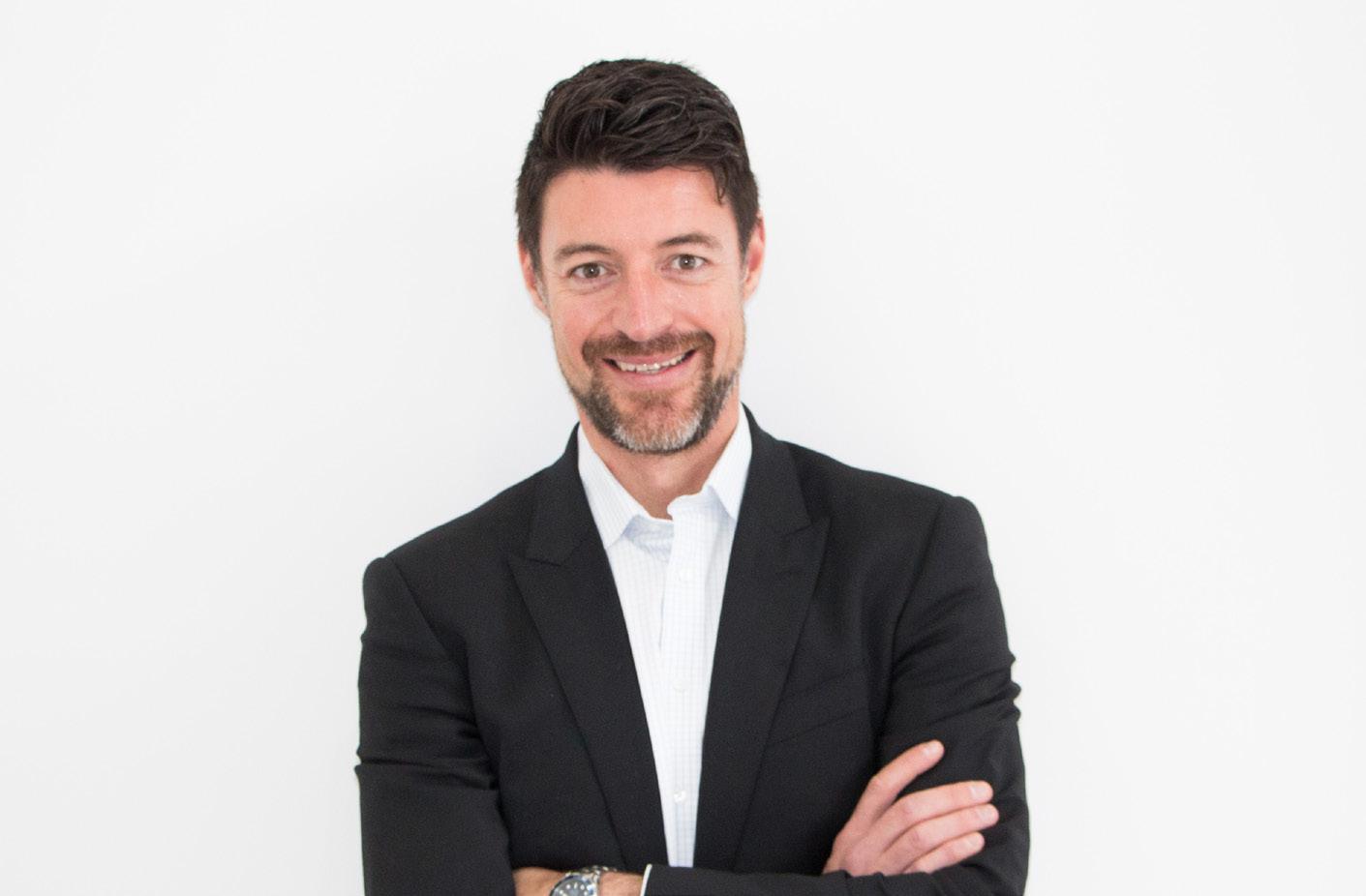
2024 was a year filled with opportunities, amid rising costs and supply chain disruptions. Jet Technologies not only weathered these complexities, but thrived.
By forging new partnerships with industry leading companies for the market adoption of pioneering technologies, such as our recent affiliation with ACTEGA in 2024, we continued to add significant value to our customers’ businesses and the broader industry in 2024.
As the Australian printing industry faces evolving consumer expectations, rising costs, and increasing environmental pressures, the following three key trends will shape the path towards a smarter and more sustainable future:
Precision, efficiency, and opportunity with print-on-demand (POD): POD will become more prominent in the local printing industry in 2025, offering businesses the ability to produce materials in exact quantities as required. This approach eliminates the inefficiencies of overproduction, reduces storage costs, and significantly minimises waste –addressing both environmental concerns and bottom-line pressures.
The need for custom, on-demand solutions are escalating as businesses work to minimise overproduction and deliver on the growing consumer expectation for personalisation. At the same time, challenges like labour shortages and rising
costs are pushing the industry toward smarter solutions, such as POD, which emphasises waste-free production, eco-friendly materials, and automated workflows to unlock new growth in a competitive marketplace.
The rise of POD is particularly impactful in the packaging sector, where short-run production and rapid turnaround times are critical. For example, beverage companies using POD can create tailored, region-specific packaging for limitededition products tailored towards local events. This strategy can help move stock and create lasting impressions with consumers and help build brand loyalty.
POD also offers businesses new ways to connect with customers through integration with cross-media marketing campaigns. This capability allows businesses to print and distribute personalised marketing collateral – such as QR code-enabled flyers – on a just-in-time basis for limited offers, creating a seamless bridge between physical and digital customer interactions.
Automation transforming workflows: Automation is changing every phase of the printing process, driving efficiency and improving margins in an increasingly competitive market. From automated job submissions and scheduling to AI-driven quality control, businesses are leveraging technology to reduce manual intervention and error rates while optimising output. Automation is critical in addressing the dual pressures of labour shortages and escalating
operational costs. By streamlining processes, it empowers printing businesses to deliver superior results faster, with greater accuracy, and at a lower cost – transforming the way the industry operates and meets customer expectations.
For instance, a printer could integrate automated binding and trimming systems, enabling shorter turnaround times for high-volume book production, while maintaining impeccable quality standards.
Additionally, cloud-based workflow management systems are allowing businesses to operate seamlessly across multiple locations. These platforms provide real-time visibility into job status, inventory levels, and maintenance schedules, empowering teams to make informed decisions and address potential issues proactively.
Sustainability as a core strategy:
Sustainability has evolved from an industry buzzword to an operational necessity. In 2025, printing businesses will lean into eco-conscious innovations such as recyclable, biodegradable, and non-plastic materials. At the same time, energy-efficient technologies, like LED UV curing, are reducing resource consumption without compromising on quality.
In 2025, we expect an even stronger emphasis on sustainability, with environmental, social, and governance (ESGs) and sustainable development goals (SDGs) initiatives becoming central to printing and management practices. Print manufacturers and their partners have a unique opportunity to lead in sustainability, helping businesses reduce emissions while ensuring operational excellence. Australian printers who embrace water-based inks and carbon-neutral production processes are strategically positioning themselves to forge partnerships with environmentally conscious retail brands. This approach not only reduces their carbon footprint but also enhances their appeal as a preferred vendor for clients prioritising ESG alignment.
Further innovation is occurring in material reuse, with advancements in circular economy models enabling used packaging materials to be repurposed into new products. This trend is fostering collaborations between the printing and recycling industries, creating a closedloop system that benefits both the planet and profitability.
As the printing industry moves into 2025, trends such as POD, automation, and sustainability are key factors shaping its future. With these innovations at the forefront, Australian printing businesses are uniquely positioned to meet evolving demands, improve efficiency, and lead in environmental responsibility.
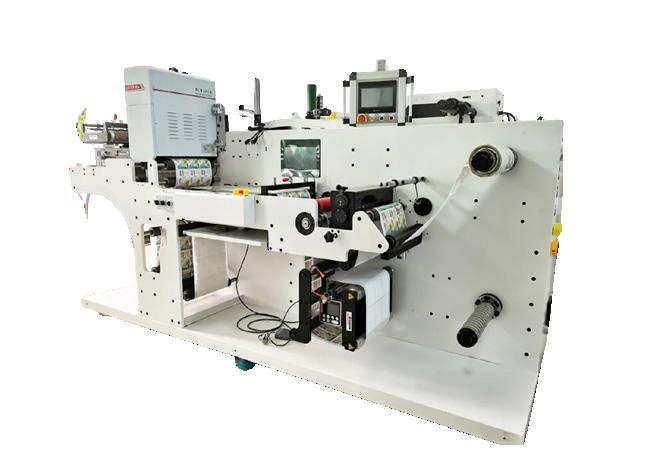
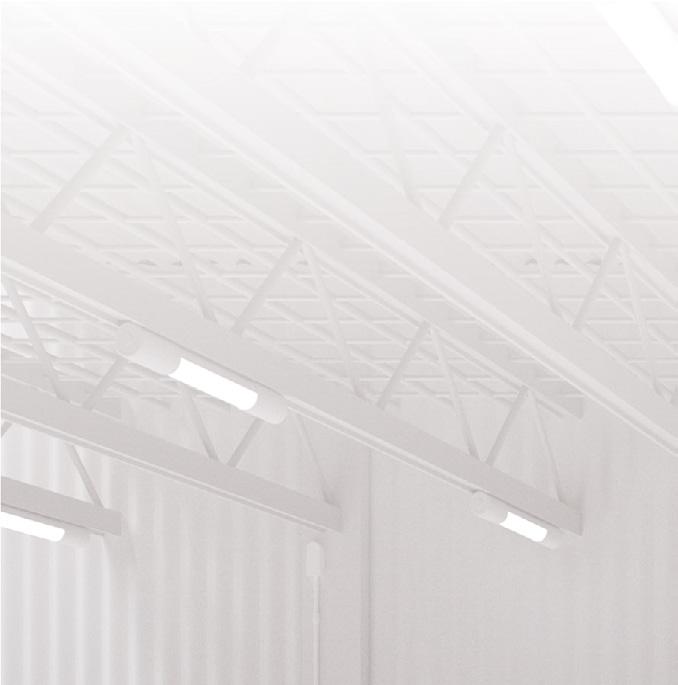
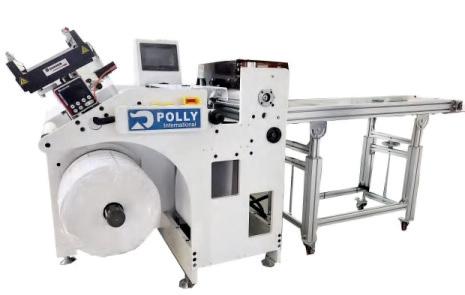

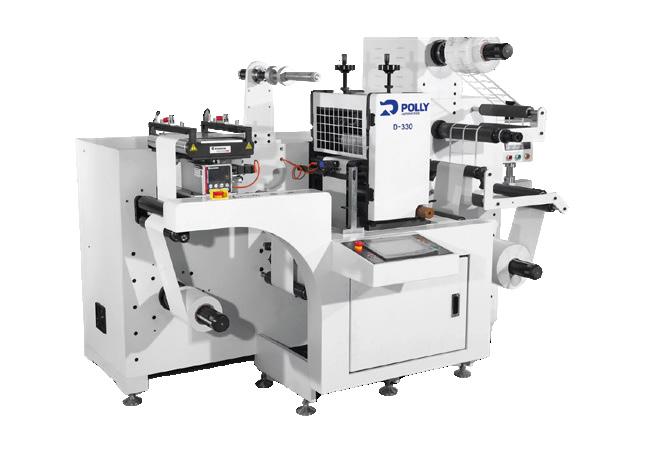



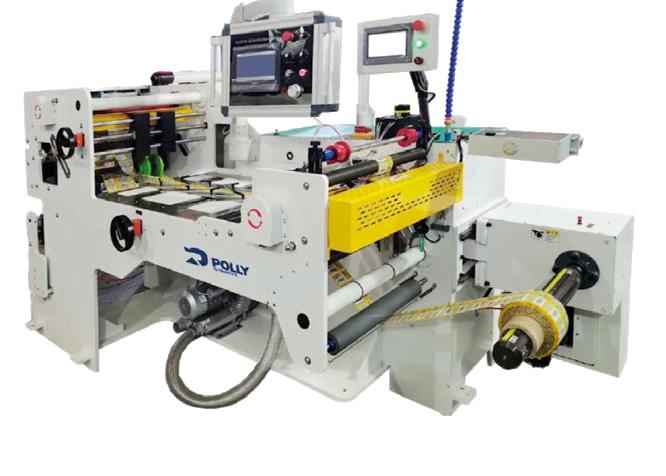
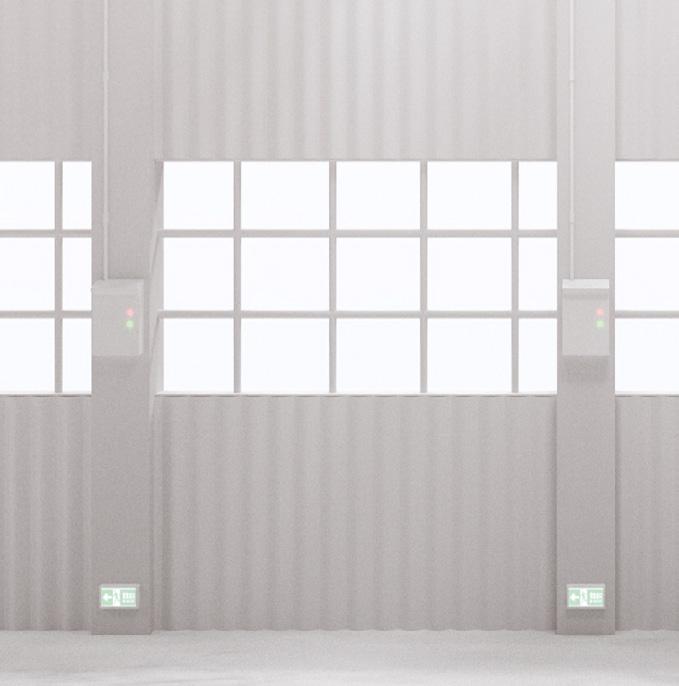


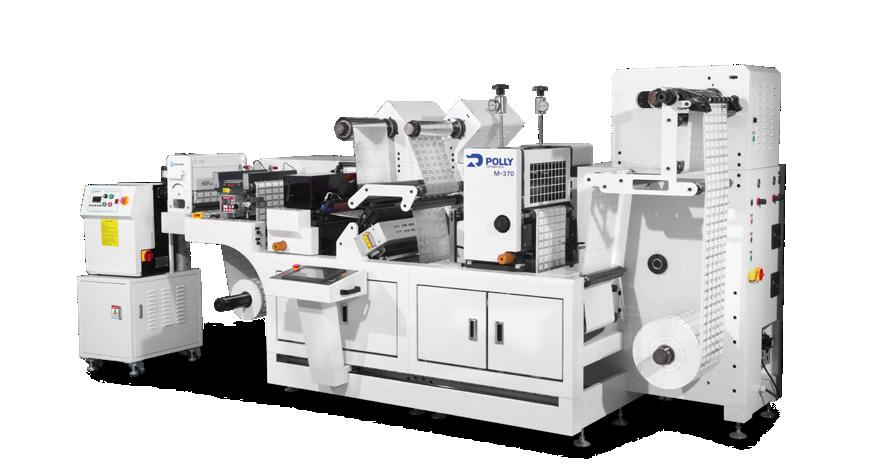






The packaging landscape is in a state of evolution. The industry will need to balance cost effectiveness, sustainability, and compliance, with the drive for lower consumer costs impacting the packaging supply chain. This may result in customer-driven trade-offs between packaging performance, raw materials, or product claims and costs.
State legislative requirements are also changing, affecting end- and beginningof-life packaging and environmental claims, with consumers seeking increased transparency around traceability while making more sustainable choices.
The packaging industry needs to work together to help governments and regulators develop and implement environmental packaging policy and regulations which are consistent and workable across jurisdictions, to drive responsible packaging practices while avoiding unreasonable increases in compliance costs, adding to cost of living pressures.
In addition, greenwashing is still prevalent in some parts of the food service packaging market, and companies need to partner with suppliers to legitimise claims. We are hoping to see more uniform decisionmaking regarding federal legislation to minimise state compliance confusion.
However, complying with federal and state-based legislation regarding greenwashing and single-use plastics will be challenging for some industry participants, along with offsetting rising
input costs and industry ‘free-riders’ operating outside of the NEPM/APCO co-regulatory arrangements. Greater sustainability oversight and accountability is essential, including investment in compliance or certification claims, as extended producer responsibility laws gain traction in the future.
In 2025, we expect more functional and user-friendly packaging designs, enhancing aesthetics, and an improved unboxing/brand experience. The debate on eco-modulated fees and their application will continue. There will be a greater focus on health and wellbeing, including eliminating chemicals of concern such as PFAS, compliance with food-safe quality regulations, and addressing CSR issues such as worker safety standards and complying with anti-modern slavery regulations throughout the supply chain.
The shift towards sustainable material choices will persist, with circular packaging options including reusable, recyclable, and compostable options, to minimise waste and align with legislation. Technologies like AI will optimise packaging processes from design and material selection to logistics, improving efficiency, reducing costs, and making advanced packaging more accessible. As a result, in 2025, innovation will continue to be essential, particularly around the rapidly growing range of paper-based packaging raw material technologies, compositions and performance, while designing products to meet customer and brand expectations.
Companies and packaging suppliers need to understand regulatory compliance and what customers want – including high-quality products and accurate sustainability information, while designing for useability and end-of-life, incorporating new technologies, certifications and testing processes to create future-proof, sustainable products.
The Detmold Group has invested heavily in this space with the 2024 expansion of our dedicated in-house packaging design and R&D lab, LaunchPad, which has increased our service offerings and customer base, including directly offering re-pulpability and other testing services to third parties and non-packaging sales customers.
In 2024, Detmold Group also launched its 2025-2050 Sustainability Goals featuring 15 targets across climate, nature, circularity, and governance. Supporting this, we completed our first Carbon Disclosure Project (CDP) environmental performance review and international solar project in Heshan, China, with 956 solar panels generating more than 574 MW annually.
We also expanded globally, strengthening our presence in North America with two new US sales offices and completed a European acquisition. In addition, we launched more than 250 products, focusing on innovative coatings and single-use plastic ban-compliant items.
2024 was a strong year for the group in terms of industry recognition, earning awards including the Full Framework Reporting Award at the 2024 APCO Awards, the APPMA Packaging Design Innovation Award, and the Flynn Group’s Product Excellence Award. We were also recognised by the SA Business Chamber for gender pay parity and equality in manufacturing, and as an Employer of Choice in the Australian Business Awards for the seventh year.
Our key priorities for 2025 are sustainability and design innovation. This includes reducing emissions in line with key customers within globally accepted timeframes, continuing to collaborate with suppliers to prevent deforestation in our supply chain, and enhancing participation in a circular economy. We are improving material optimisation, increasing use of sustainably sourced materials, reducing fossil fuel-based plastics, and introducing more recyclable and compostable packaging solutions.
Our 2025-2050 Sustainability Goals include sourcing more forest-certified fibre, increasing recyclable content in products, maximising landfill diversion, sourcing more renewable electricity and setting greater emissions reduction targets; and continued investment in governance processes to drive accountability, including CDP disclosure and Group ISO 14001 certification.

In 2024, Immij made substantial advancements in solidifying our position within the folding cartons sector in both Melbourne and Sydney, aiming to redefine industry standards and service delivery.
One of the most notable initiatives was the implementation of a flexible one-totwo-week turnaround for our printing and converting services. This innovative approach significantly contrasts with the traditional four to six-week turnaround times typically offered by competitors.
Despite these advancements, we encountered some challenges in maintaining work volume consistency throughout the year.
The variability in demand created periods of both high activity and slower times. This inconsistency was not unique to Immij, but rather reflective of broader trends observed across the industry.
A key highlight for Immij in 2024 was the celebration of employee milestones. We proudly recognised 28 staff members who achieved 15 years of dedicated service, alongside 29 others marking a decade with the company since our establishment in 2008.
One of our main priorities this year is to maintain a significant position within the horticulture and fresh produce sector.
In alignment with our environmental objectives, we are embarking on a strategic initiative to transition both our existing and
new clients from traditional polypropylene labelling material to innovative waterrepellent board alternatives.
Our proactive approach to innovation has led us to develop recyclable cardboard plant labels and fresh produce labels.
These advancements are designed not only to meet the functional needs of our clients but also to substantially reduce the reliance on plastic, thereby minimising the amount of waste sent to landfills and reducing our environmental impact.
We consistently seek methods to assist our clients in making knowledgeable decisions about how their packaging solutions can be repurposed, recycled, or composted.
Earlier, I discussed the areas of green life and fresh produce; in addition, we have recently revamped the packaging for a global pen company by eliminating the blister pack to ensure it is entirely recyclable.
Another significant and well-known brand aims to replace a non-recyclable reflective coating on its secondary packaging. Therefore, we are exploring different materials, finishes, and designs that will still provide a visually striking presence on store shelves while minimising environmental impact.
The packaging landscape is increasingly competitive as more commercial offset printing companies are shifting their product focus towards folding cartons.
This shift is attributed to the stagnation or decline of the traditional commercial print market, whereas the packaging industry is experiencing year-on-year growth.
The silver lining is that there is ample highquality work available, with converting companies that are offering unique advantages best positioned to benefit. I believe conversations about packaging are expected to remain centred on sustainability through 2025.
In packaging design, I hope to see more vibrant and striking colours and the introduction of more embellishments –allowing products to stand out on the shelves.
I have seen this trend begin to emerge in the previously somewhat dull ready-toeat-meal industry, which has now become highly competitive and crowded. Brands are employing bold Pantone colours and spot gloss varnishes to distinguish between different varieties, making the brands themselves more adventurous.
“We consistently seek methods to assist our clients in making knowledgeable decisions about how their packaging solutions can be repurposed, recycled, or composted.”
I believe automation will also reach unprecedented levels this year. Additionally, digital printing capabilities for not only premium packaging, but everyday packaging will become even faster, larger and more impressive.
A major challenge for the industry in my opinion is the current economic situation, particularly in Victoria, which is causing widespread anxiety about expenditure and the significant level of government debt, which is preventing many individuals from taking initiative in their decisions. In 2025, the printing industry might undergo additional mergers and acquisitions.
But it is all not doom and gloom. On a brighter note, with more projects being produced domestically post-COVID, demonstrating a reliable history of consistent delivery will enable companies to expand their businesses further.
As an industry, we are lucky to be involved in a field that is both creative and engaging, and it is important to occasionally pause and appreciate this.

2024 was a tale of two halves. The first six months was extremely busy, with order levels very strong. We then saw a decline in order levels in the second half of the year. Ever increasing costs – especially government-controlled costs – and a lack of skilled staff were two major issues that we had to face in 2024.
No matter how we tried, we could not get the percentage increase to our cost base anywhere near the official inflation rate. Sadly, we continued to see our supplier base shrink in 2024. On the positive side, Impact International installed two production machines in 2024, further adding to our capabilities.
Throughout 2024, we maintained focus on quality and sustainability. Our sustainable forest program remained well supported and we continued to work with our customers to move from non-recyclable packaging formats into packaging that is designed to be recycled.
Back in August 2022, we planted more than 5000 trees at the Impact Forest. These trees are growing well and as a result our carbon capture rates for the forest are increasing. We remain the only packaging company in Australia who operates their
own forestry infrastructure to offset the carbon footprint of the packaging that we manufacture.
We also continued to support the Penrith Museum of Printing, the Zen Tea Foundation, and the Exodus Foundation –all worthy causes close to our hearts. We also communicated regularly with our customers, informing them of the current market conditions and updating them on projects that we were working on.
This year, we will be focusing on further strengthening our position in the market by offering an improved value proposition. We firmly believe that cheapest is not best; however, customers must see clear value in accepting a superior product which comes with a higher price tag.
We will also continue to develop new product offerings in accordance with the guidelines issued by APCO. Staff retention will also remain a priority as will supporting suppliers who manufacture in Australia.
The next 12 months will be uncertain for the broader packaging market. I expect our cost base to continue to increase, and a lack of skilled production staff will remain an area of concern.
I predict further consolidation in the packaging landscape, as higher electricity pricing and other fixed costs erode the bottom line of many packaging business. As many packaging companies are heavily reliant on overseas-based supply chains, the value of the Australian dollar versus other major currencies will add further pressure on Australian packaging companies. The decreased value of the Australian dollar will also weaken the business case for purchasing new production equipment.
Achieving meaningful growth in 2025 will be challenging, due to a lack of available skilled staff and softer consumer demand. If a business can offer an ‘add on’ to existing customers (think of McDonald’s, ‘do you want fries with that?’), then these sort of increased sales values to existing customers offer the good growth opportunities in 2025.
We were surprised to be told by some of our customers in 2024 that Black Friday sales were more (or equally) important to their business than the Christmas trading period.
My predictions for 2025 are that sustainability will continue to be at the forefront of the industry although the customers’ ability to pay a higher price for a more sustainable form of packaging may be reduced.
Global shipping may become more expensive and prone to longer delays as international supply chains adjust to the new geopolitical landscape that we find ourselves in. I also expect interest rates to stay at current levels for the majority of 2025, which will further restrict economic growth.
As part of our sustainability commitments, Impact International is also working on a new cap design, which is currently in the trial stage, and if successful, will help many of our customers with their sustainability goals.
My message to the industry for 2025 is to support each other. Sadly, we regularly hear about packaging and/or printing companies closing. Successful stories about new packaging or printing businesses opening are rare.
As an industry, we must do what we can to support the other companies in our industry. For example, we could purchase pallet wrap from overseas at a slightly cheaper price, however, we choose to purchase Australian made pallet wrap.
Our view is, the stronger the packaging industry is as a whole, the stronger our business will be. We need to keep focusing on key points of difference that will help our customers, and that the end consumer sees the value in Australian made packaging. The weaker the industry gets, the harder this becomes.

2024 was a very productive year for Kuhn Corp Print & Packaging. 2024 saw the commencement and continued improvement of production in the Ovotherm Packaging Malaysian plant, as well as the successful acquisition and inclusion of Regal Signs & Designs into the Kuhn Corp Print operation.
These achievements were coupled with the continued implementation of sustainable materials for all our production facilities.
As we enter 2025, our main priorities will be our continued growth strategy, coupled with increased efficiencies in all our manufacturing operations.
Our people also remain a key focus for us, ensuring that our Employee Net Promoter
Score (eNPS) remains high as well as ongoing high rate of staff retention.
As more commercial printers enter the packaging area, I see an increase in supply and technological support that will be available, but also an increase of competitiveness, which will ultimately drive down the profitability of the sector.
As our population increases there will also be an increase in the marketing and packaging for retail and tourism markets. Innovative marketing incorporating print and packaging will be required to fuel the growth of income for these markets and ensuring their ongoing sustainability.
I am fairly cautious about the next 12 months and predict relatively low growth. I believe that availability of qualified staff
will also remain an ongoing issue in the industry, and we will see further consolidation/rationalisation of the sector.
Globally, packaging will continue to be a growth area as we convert from wet markets to a retail environment in the developing nations. This will be driven by food safety and retail requirements and will further the need for the packaged good environment.
Australia is in a continued population growth stage, which brings with it opportunities for the industry this year and beyond. Major tourism events, such as Queensland hosting the Olympics in 2032, will continue to bring increased local and tourism spend for all sectors of the market, which the industry relies on for its growth and continued profitability.
“Innovative packaging solutions that reduce food wastage, increase shelf life, increase attractiveness of the product, and promote the circular economy will all play a role in increasing opportunities for the packaging industry.”
Unfortunately, I see the lack of value we have for our manufactured products as we continue to compete on price and drive the value of our manufacturing further down as our major challenge.
Innovative packaging solutions that reduce food wastage, increase shelf life, increase attractiveness of the product, and promote the circular economy will all play a role in increasing opportunities for the packaging industry.
Sustainability will remain a key focus for our business in 2025. We will continue to promote the circular economy in all areas of print and packaging so we can save our natural resources for future generations to enjoy.
My message for the packaging industry this year is this: take pride in the amazing products you produce from the design to production and the end finished products.
Do not sell yourself short in the value, functionality, and beauty of the product you produce. Let’s lift the industry profile so it is seen to be an industry that is at its heart, advanced manufacturing, innovative, sustainable, creative, fun and dare I say, sexy!

Reflecting on 2024, we’ve seen significant changes in the fibre packaging industry, filled with both challenges and advancements. There’s no doubt that the biggest trend impacting the packaging industry is the increasing demand from consumers for more sustainable packaging.
This has resulted in brands choosing to move away from plastic-based packaging by swapping over to paper- and fibrebased packaging, creating a surge in paper-made products. Brands are also realising that the move towards fibre packaging better meets their sustainability goals and National Packaging Targets.
However, there is a downside when it comes to some other influences impacting the industry. It’s difficult to gauge what the Trump tariffs, unrest in the Middle East, and evolving situations in regard to the EU Packaging and Packaging Waste Regulation and what that might mean for our industry here, in A/NZ, but one thing is clear: uncertainty requires businesses to be flexible.
Despite facing rising costs of materials and operating costs, ongoing skilled labour shortages, and various economic pressures, overall, our industry has shown resilience in navigating these challenges.
As we step into 2025, the packaging industry will continue to face these challenges and opportunities.
By focusing on sustainability, embracing automation, and investing in workforce development, we can build a stronger, more resilient future together.
To stay competitive, businesses need to embrace proactive strategies to get ahead of the curve.
Going into 2025, as the demand for eco-friendly print and packaging solutions continues to rise, companies need to step up their focus on sustainability. Those that do not, risk getting left behind. This means looking at ways to offer more eco-friendly options and having conversations with clients about what switching to fibre-based packaging may look like for their organisations in terms of performance, cost, and availability.
As consumers increasingly seek sustainable options, the industry also has a fantastic opportunity to get creative with design and materials. By targeting niche markets and offering sustainable packaging solutions, businesses can really set themselves apart.
By analysing each segment’s behaviours, characteristics and preferences, converters can customise their products, services and strategies to fit specific needs. This targeted approach will enable them to drive profitability, boost market penetration and improve customer satisfaction, resulting in overall business growth.
Converters can also become more sustainable by committing to tracking and reducing their own Scope 1 and Scope 2 emissions, exploring renewable energy sources, and implementing energy-saving measures. They can embed sustainability into their operations through green printing initiatives too.
Another point of focus for businesses in 2025 should be working hard and smart to improve efficiency – all while maintaining the quality and delivery expectations of clients.
Having attended drupa in 2024, I noticed considerable investment being made into technology by local businesses at and following the show. There continues to be a strong push for innovation in products and production methods, particularly leveraging Industry 4.0 technologies and robotics to keep up with market demands.
Technological advancements in robotics and automation will help enhance efficiency and maintain the competitiveness of the packaging industry in Australia.
In addition, industry players need to further invest in workforce development with meaningful training initiatives.
From my many discussions with local business leaders, it seems as though several have expanded apprenticeship programmes to bring in and nurture skilled talent. This is a necessary step to develop a young workforce for the digital age. It also brings into business a fresh set of talent and ideas.
At Platypus Print Packaging, we understand that packaging is our core and it’s all about doing that better and being more efficient. We see a lot of growth opportunities from our existing customers through sustainability, with plastics being on the nose and fibre packaging being in. So, there are opportunities for us to grow.
Let’s keep collaborating and innovating as we adapt to new demands and strive for positive change within our sector and beyond. Here’s to making 2025 a year of sustainable growth and meaningful progress for our industry. There are plenty of exciting opportunities on the horizon.

2024 proved to be another challenging year, with significant transformation driven by initiatives around sustainability, technology, and the challenge of understanding an unpredictable supply chain. ‘Eco-friendly’ materials continued to be adopted by many print companies and brands, with paper, biodegradable, and recyclable solutions, at the forefront.
There was a stronger focus on sustainability through the adoption of eco-friendly inks and materials, as well as the streamlining of processes to reduce waste. Smarter companies looked to collaborations and trade partnerships to gain access to new products and take advantage of innovations within the industry.
The industry also leveraged innovations and automation to enhance efficiency and reduce costs. Looming, if somewhat uncertain, regulatory pressures continued to exert pressure on businesses to rethink their strategy to understand and also comply with sustainability goals and environmental standards, while meeting the demands of a more conscientious consumer base.
We also saw the overall number of businesses decline as companies closed or combined through merger and acquisitions.
To remain relevant, many Australian print and packaging businesses looked to digital transformation to improve workflows and efficiency. However, the reality and costs
of integrating such advanced printing technologies and equipment are challenging from an ROI and implementation perspective.
Efficiency, enhanced consumer engagement, and supply chain transparency remain key focal points for businesses in 2025. The cost pressures of inputs and supply chain challenges remain one of the biggest demands on businesses and the industry.
We continue to look for ways to reduce overhead costs and streamline operations in a climate where costs are up, but the ability to pass on these costs gets ever more challenging. Rather than trying to be everything for everyone, a return to collaboration and co-operation may help future-proof businesses.
The hidden gem that seems to be resurfacing is print partnerships, where businesses look to work together to provide solutions that benefit each other in the areas they specialise in, rather than the need to invest in new areas.
In addition, looming regulatory changes have increasingly focused on reducing environmental impact and promoting sustainability but are somewhat struggling with balancing this in a commercial reality.
The government has implemented various policies aimed at minimising plastic waste, encouraging recycling, and mandating the use of eco-friendly materials, even with a lag in the infrastructure to support this.
These regulations compel both the print industry and brands to innovate their packaging processes and materials to comply. It is expected that non-compliance will soon look to fines and/or damage to brand reputation, making it crucial for businesses to stay informed and adapt accordingly.
The industry may benefit from increased collaboration between businesses and governments to achieve and make sense of national sustainability goals.
We can also expect a greater shift towards fully recyclable and biodegradable materials, including a significant rise in sustainable materials such as plant-based plastics and recycled content.
In 2025, packaging tradeshows will showcase innovative, sustainable packaging solutions, including biodegradable materials and how they interact with advanced recycling technologies. We will also see a stronger push for smart packaging technologies that enhance production techniques and supply chain efficiency.
Data and personalisation also continue to be hot topics, with companies leveraging data to create meaning and tailored experiences for consumers.
As for design trends, they will highlight minimalist packaging and personalised solutions, contrasting simplicity, transparency, and clarity with bold designs that get and keep attention in a very crowded and ‘same same’ market space.
This year, the QLM Group is looking to prioritise our portfolio of sustainable options to comply with changing regulations and meet the growing consumer demand for sustainable options.
We are focusing on several key areas of our sustainability targets in 2025, with initiatives focused on minimising waste and the use of recyclable or reusable packaging solutions.
We are also committed to reducing our carbon footprint by implementing more energy-efficient production processes.
QLM plans to increase the use of sustainable materials, such as biobased and recycled content in our portfolio of products offered for labels and packaging and will continue to engage with customers to promote a stronger understanding of how to achieve sustainability goals.
We are also looking to work closely with our trade partners to ensure we provide the market with trusted and valued information and products to provide to their clients.

Australian
In Australia, the packaging industry was working in a rapidly changing environment in 2024. Since the announcement from the Department of Climate Change, Energy, the Environment and Water (DCCEEW) that there will be a mandated National Packaging Design Standard established for the country, the industry has been heavily involved in providing feedback and contributions to the consultation process.
The key areas that the industry is looking at include the ability to reduce and reuse packaging and materials, the reduction and removing of any harmful chemicals from packaging such as PFAs, how we increase the amount of recycled content to help drive domestic end markets, and how to improve consumer and business education and training around packaging.
From a global perspective, the 64 World Packaging Organisation members all faced similar challenges and changes to country regulations that came in the form of sustainable packaging design guidelines, eco modulation design tools, extended producer responsibility programs, product stewardship programs, recycling and reprocessing infrastructure, and container deposit schemes.
What is clear is that there is no ‘silver bullet’ and each country must try and
localise global standards to suit their country or region. In saying that, we do need to ensure, wherever possible, that we try and follow the same global standards and regulations and then tailor them for each country.
Heading into 2025, the DCCEEW will be consulting with governments and industry on packaging design guidance from the National Design Standards Working Group, which is based on best practice and independent expert views.
The Working Group has already developed a Design for Kerbside Recyclability Grading Framework. This framework encourages best practice design while allowing packaging to perform essential functions. The packaging design guidance provides a clear indication to industry about the importance of recyclability in good packaging design and will inform Australia’s new regulatory scheme for packaging.
The AIP will be working with DCCEEW to ensure the mandated National Packaging Design Standard is suitable for everyone in the value chain – from SMEs through to multinationals. The AIP is also updating many of its training courses to ensure that we are discussing recycled content, chemicals of concern, reuse and refill, and design to be recycleready for kerbside collection.
The roadmap towards the mandated National Packaging Design Standards will determine what the industry does moving forward, in terms of how the packaging landscape further evolves in 2025.
A lot more work will also be undertaken by everyone in the industry to also review alternate pathways and collection and reprocessing outside of kerbside collection.
In 2025, businesses should continue to design packaging that offers the lowest environmental impact, making sure that they build in recycled content, eliminate chemicals of concern, move to mono material packaging, and ensure that all their packaging is recycle-ready in the country that it is sold in.
I would also like more packaging technologists to embed the Save Food Packaging Design guidelines into the National Packaging Design process and to elevate the discussions around packaging’s role to minimise food loss and waste. Accessible and inclusive packaging design is also underutilised by packaging technologists, and we need to see these design principles elevated as well.
A personal highlight for packaging in Australia in 2024 was the AIP-led Save Food Packaging Project, which received the inaugural Food Waste Action Award.
The AIP Save Food Packaging consortium, which includes the AIP as the project lead, RMIT University as the research arm, and an industry led consortium of experts including Sealed Air, Zipform Packaging, Multivac, Result Group and Plantic, aims to further establish a voice for Save Food Packaging within the greater realm of sustainability and packaging design.
The Save Food Packaging project resources provide training and education materials that will lead to better packaging design, material selection and format selection using appropriate portioning, sealability and resealability features, date labelling, extend shelf life, and provide the information required to assist retail, food service and consumers to minimise food waste.
This project is just the start of the AIP continuing to be the subject matter expert in Save Food Packaging design. The next step for the AIP is to help guide businesses into embedding the five Save Food Packaging Design principles into their own businesses.
Other priorities for the AIP in 2025 include: running the AIP biennial Australasian Packaging Conference for A/NZ on 6-7 May in Sydney, discussing the theme of Reimagining Packaging Design. The Australasian Packaging Innovation & Design Awards (PIDAs) will also be held alongside of the conference on 6 May.
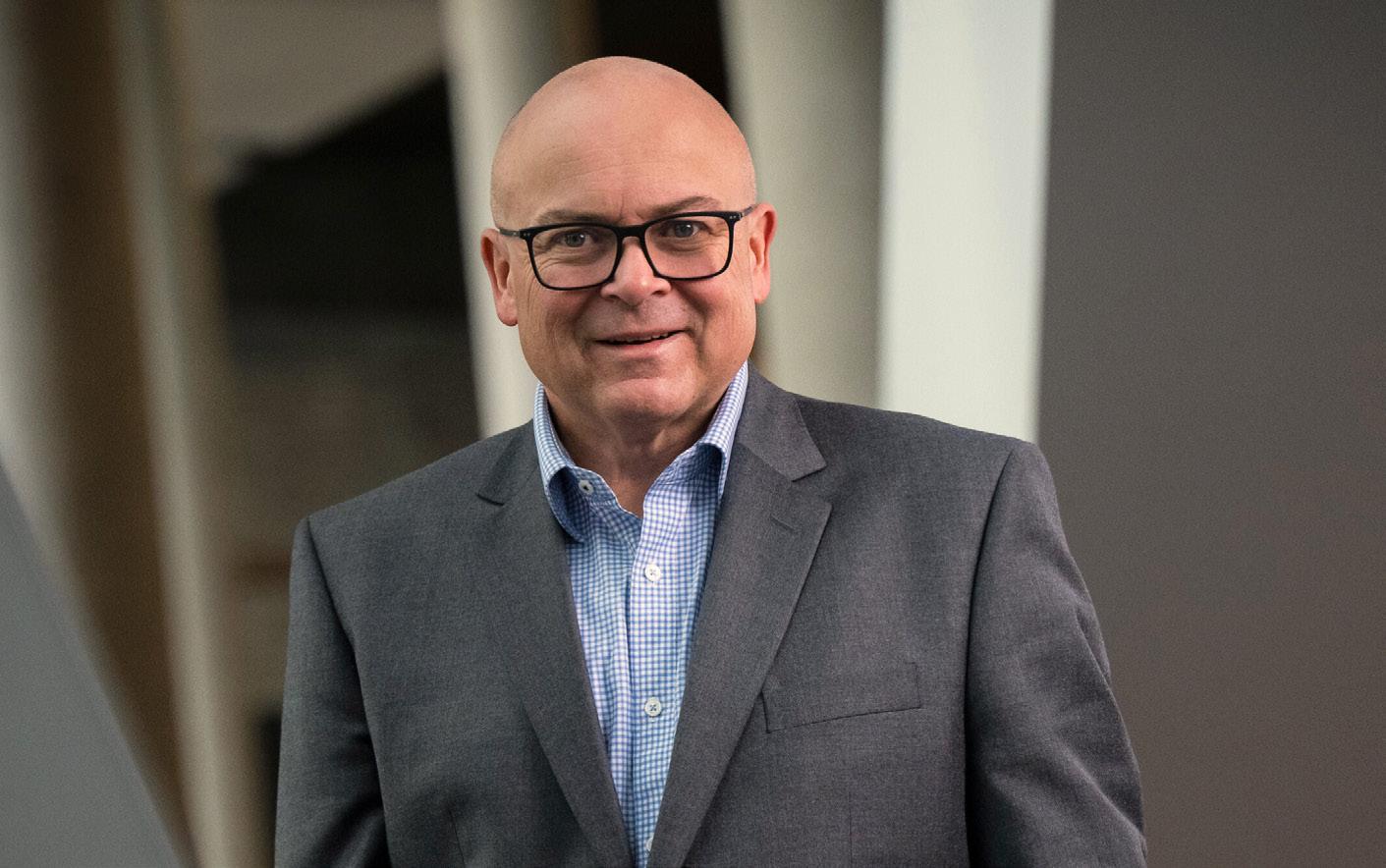
The packaging industry faces several significant challenges in 2024, including navigating an increasingly complex regulatory landscape, managing the costs associated with sustainable packaging, and overcoming technical barriers in recycling processes. Additionally, there is a critical need for investment in domestic infrastructure, particularly in recovery systems, to support a more circular economy.
Despite the change that still lies ahead, 2024 demonstrated the industry’s resilience and collective determination to build a thriving circular economy for packaging in Australia and beyond. To maintain momentum in 2024, many businesses took proactive steps to align with evolving consumer and regulatory expectations around sustainability.
A significant milestone was the widespread adoption of the Australasian Recycling Label (ARL), with more than 1,000 businesses now part of the program and more than 500,000 SKUs featuring the ARL across Australia and New Zealand.
In response to the collapse of soft plastic recycling, businesses stepped up to develop innovative solutions. The Soft Plastic Taskforce, led by Woolworths, Coles, and Aldi is trialing new in-store collection systems in Melbourne, Sydney, and Newcastle to create a scalable model for a nationwide rollout. Similarly, the Australian Food and Grocery Council’s National Plastics Recycling Scheme (NPRS) is piloting kerbside soft plastic collection
in select regions to assess the collection of soft plastic packaging via recycling/ yellow lid bins and other methods.
In 2024, the ANZPAC Plastics Pact also achieved a major milestone by securing funding to launch Circular Pacific Plastics, a project addressing waste management in the Pacific Island nations.
2025 will continue the trends seen in 2024, with greater emphasis on moving early and quickly to get ahead of emerging mandates, standards and regulatory reform. Some predictions on what we’ll see include:
Preparing for packaging mandates:
In 2025, businesses will have an increased focus on packaging design standards ahead of emerging mandates. Traceability and data will become critical, ensuring compliance and enabling informed decisions as regulations take effect. Now is the time for businesses to use the Sustainable Packaging Guidelines (SPGs) to assess their packaging.
PFAS in packaging: PFAS (per- and polyfluoroalkyl substances) will remain a key area of focus. These fluorinated compounds are widely used in applications, but their resistance to degradation makes them significant environmental pollutants. When used in compostable packaging, PFAS also disrupt organic waste streams. APCO will continue to lead industry efforts on this issue, with the release of a PFAS Discussion Paper outlining the next steps for a national phase-out. As public attention on PFAS
shifts from water contamination to packaging, industry action will follow.
Recycled content on the rise: The demand for recycled content in packaging will continue to grow, driven by both consumer expectations and legislative pressures. However, barriers such as price and adoption will still pose challenges for the industry. The 2030 Strategic Plan will look to address these barriers for brand owners and packaging manufacturers.
Businesses should commit to three key actions in 2025:
1. Use APCO’s SPGs to review their existing packaging or design and specify new packaging: Brand owners are encouraged to explore circular solutions, such as reusable systems and closed-loop recycling, while collaborating with stakeholders across the supply chain to achieve sustainable outcomes and meet regulatory requirements. Ultimately, packaging should balance sustainability with functionality, accessibility, and clear communication to support consumers in making sustainable choices.
2. Apply the ARL on packs to help consumers dispose of the used packaging: The ARL helps consumers dispose of packaging correctly by providing clear, consistent guidance for each packaging component. By reducing confusion, the ARL improves recycling rates and supports a circular economy.
3. Improve their packaging data collection and traceability: This ensures compliance with upcoming mandated packaging design standards and recycled content laws. Accurate data is critical to demonstrate compliance, support eco-modulated fees, identify improvement opportunities and enhance credibility.
In 2025, APCO’s main priority will be supporting our members and the broader packaging industry to lay the groundwork for implementation of the APCO 2030 Strategic Plan, unveiled in August 2024. This plan aims to provide economic incentives for material circularity and achieve National Packaging Targets.
A key focus will be member and system engagement to finalise our eco-modulated fee model, which will incentivise brand owners to eliminate or reduce packaging, adopt reuse models, and transition to recyclable materials and formats. Funds raised through this model will be strategically invested in overcoming economic barriers in the downstream recycling system, driving progress toward national packaging targets.

024 was a transformative year for Close the Loop, as it underwent a rebrand mid-year to mark the continued integration of its business units across Australia, the US, South Africa, and Europe.
As the largest recycler of printer consumables, our multi-brand collection program for printer cartridges in Europe celebrated its one-year anniversary, with more than 2.5 million products recovered in its first year – a huge achievement that aligns well with the success of our other multi-brand programs in Australia and the US.
In the tech space, we further solidified our position as a key certified refurbish partner for HP and were recognised this year with the success of the HP Renew Solutions program.
In the packaging space, shifts towards sustainable packaging design (particularly in Australia) aligned well with our ethos and the strengths of our combined company expertise, although finding food-grade recycled content for flexible packaging continues to be a challenge that we’re looking to further develop for clients this year.
In 2025, our global focus will be on our premise of “collecting today, creating tomorrow”. Close the Loop is focused on further development of product and
material reuse, including tech refurbishment and recycled content products and packaging of high value, to ensure the pull-through effect required for a robust circular economy. Continued growth in the American market will be a key priority for the business moving forward, with huge potential and appetite for our offering still to be tapped into.
In Australia, our main priorities for 2025 will be on collection and recycling and packaging regulation. We recently announced the development of a new soft plastics recycling facility in NSW to further expand our capacity for tackling this difficult material and turning into our high-performance asphalt improvement additive TonerPlas. We’re also focused on traceability in 2025 and working to integrate new systems into our business for carbon accounting and for the traceability of recycled materials from their point of generation through to what product they end up in.
We will also be working alongside our packaging clients to help them transition towards more recycle-ready packaging, in-line with upcoming packaging design regulations proposed by the Federal Government.
A key sustainability commitment that we have also made for 2025 is the development of an industry-leading recycled content
traceability program in partnership with Recity, GS1, and the Victorian government, while also integrating carbon accounting into our packaging business to provide reporting and data to our clients.
We believe this year is going to be a delicate balancing act between product performance and protection, and the reduction of both packaging and food waste, all while considering company production efficiencies and requirements – but we’re all about creating something new that works to tick as many boxes as possible. We think commercial packaging and ‘back of house’ waste will start to become more of a focus in discussions around sustainability, too.
For businesses looking to be more sustainable this year, we believe they should be looking at the full picture to find the best way forward – packaging and product lifecycles need to be investigated to determine what is the most sustainable solution. Carbon footprint has to be accounted for, in addition to end-of-life recovery and waste.
Brands also shouldn’t let perfect be the enemy of good – sometimes reducing packaging material use or removing unnecessary components can be a costeffective and easy implementation to begin the journey.
In 2025, we anticipate demand for paper solutions and mono-materials will continue to grow, while it seems calls for polymerbased compostable packaging may be declining. Chemicals of concern such as PFAS are also a big consideration in fibre packaging in particular, and movements to phase these out of the packaging system is a positive step that will continue to gain momentum next year. Recycled content and a focus on locally sourced products will be a big selling point for businesses that can come up with solutions.
The challenges will be the limitations of existing packing equipment that brands have in their arsenal, and how far we’re able to change the materials that need to run through these machines – into other mono-materials before product loss, reduced running speeds, and wastage on the line outweigh the benefits of the packaging itself being more recycle-ready.
Again, the need for traceable, quality recycled content sources for food-grade products will be one of the largest challenges for packaging manufacturers and suppliers in the coming few years.
Opportunities are for those nimble enough, or those who have enough investment behind them, to capitalise on the ever-increasing consumer demand for waste reduction and more producer responsibility.

2024 presented both highlights and challenges for the packaging industry. One of the key difficulties faced was meeting the high expectations set by the strong performance of the previous five years, during COVID and subsequent ‘COVID hangover’, which created pressure for continued growth.
At a segment level, flexibles and glass packaging found themselves under increasing pressure due to evolving market demands and supply chain constraints, whereas aluminium cans and folding carton segments commissioned substantial investments aimed at expanding capacity driven by increased demand for sustainable packaging solutions.
Without a doubt, cost management became the highest priority, and companies began trimming unnecessary expenses and refocusing their efforts on core areas to improve efficiency. Many also undertook strategic plan refreshes, seeking new growth opportunities and identifying ‘‘green shoots’’ in emerging markets or product lines.
Some companies continued to commission legacy capital expenditure (capex) projects, ensuring that long-term investments were still delivering value. Furthermore, businesses increasingly marketed their sustainability credentials, emphasising the use of recycled content and the production of 100 per cent recyclable products to meet both consumer demand and regulatory pressures for more eco-friendly practices.
In 2025, packaging companies appear to be prioritising two key areas. First, meeting
sustainability and packaging targets will be a top focus, as businesses continue to align with environmental regulations and consumer expectations for greener solutions. This includes further investments in sustainable materials, increased recycled content, and the development of fully recyclable products.
Second, in a tight market, companies will place a strong emphasis on profit optimisation, seeking ways to improve efficiency, reduce costs, and maintain profitability amid economic pressures and competitive challenges. Balancing these priorities will be essential for longterm success in an evolving industry.
This year, industry consolidation is likely to continue, driven by mergers and acquisitions, as well as the rationalisation of manufacturing operations, as companies seek to streamline and strengthen their competitive positions.
Economic pressures will still play a part in consumer behaviour right through the calendar year, with relief only coming at the back end. With this in mind, and the continued sustainability demands, the winning solutions will be those that can deliver sustainability benefits without driving up cost.
Those with healthy balance sheets will focus on strategic investments aimed at reducing costs, leveraging innovation and technology to enhance efficiency. We are already seeing packaging companies reassessing and optimising their supply chains after the disruptions and ‘hangover’ caused by the pandemic, seeking better cost and inventory holding positions.
The most significant opportunities and challenges in the packaging industry revolve around balancing sustainability with commercial viability. Delivering sustainable solutions at competitive costs will remain a primary focus, as the demand for ecofriendly packaging continues to grow.
Another key challenge will be securing raw materials that either contain recycled content or are suitable for recycling. The ability to source these materials reliably, with guaranteed performance outcomes, will be essential for maintaining supply chain stability and meeting sustainability targets.
Packaging businesses should focus on several areas of growth in 2025 to stay competitive. First, specialising in smaller pack sizes and customisable packaging will be key to hitting price points and providing added value for your customers’ end customers.
Additionally, there will be a growing demand for sustainable packaging solutions that don’t come with a cost premium, as consumers increasingly prioritise eco-friendly options.
Lastly, digital print technology on all packaging formats is expected to see continued growth as it becomes more cost-effective, offering businesses the ability to produce shorter runs with greater flexibility and customisation.
In 2025, we expect to see several exciting innovations shaping the future of packaging. One key area of development will be further advancements in intelligent and smart packaging, which will leverage technology to enhance user experience, improve supply chain tracking, and offer new functionalities such as interactive or sensor-based features.
Another major trend will be a strong drive towards mono-material packaging, as companies focus on improving recyclability by using a single material type, which simplifies recycling processes and reduces environmental impact.
Additionally, there will be an increased emphasis on refillable and reusable packaging solutions, as businesses strive to minimise waste and promote circular economy practices.
The key to success in the packaging industry lies in having clear, well-defined plans that are executed across the entire organisation. It is crucial to do the planning upfront and ensure that the entire team is engaged in delivering the solutions. Only by fostering and rewarding a culture of accountability and execution can companies effectively deliver on key strategic initiatives that deliver growth and stronger returns.
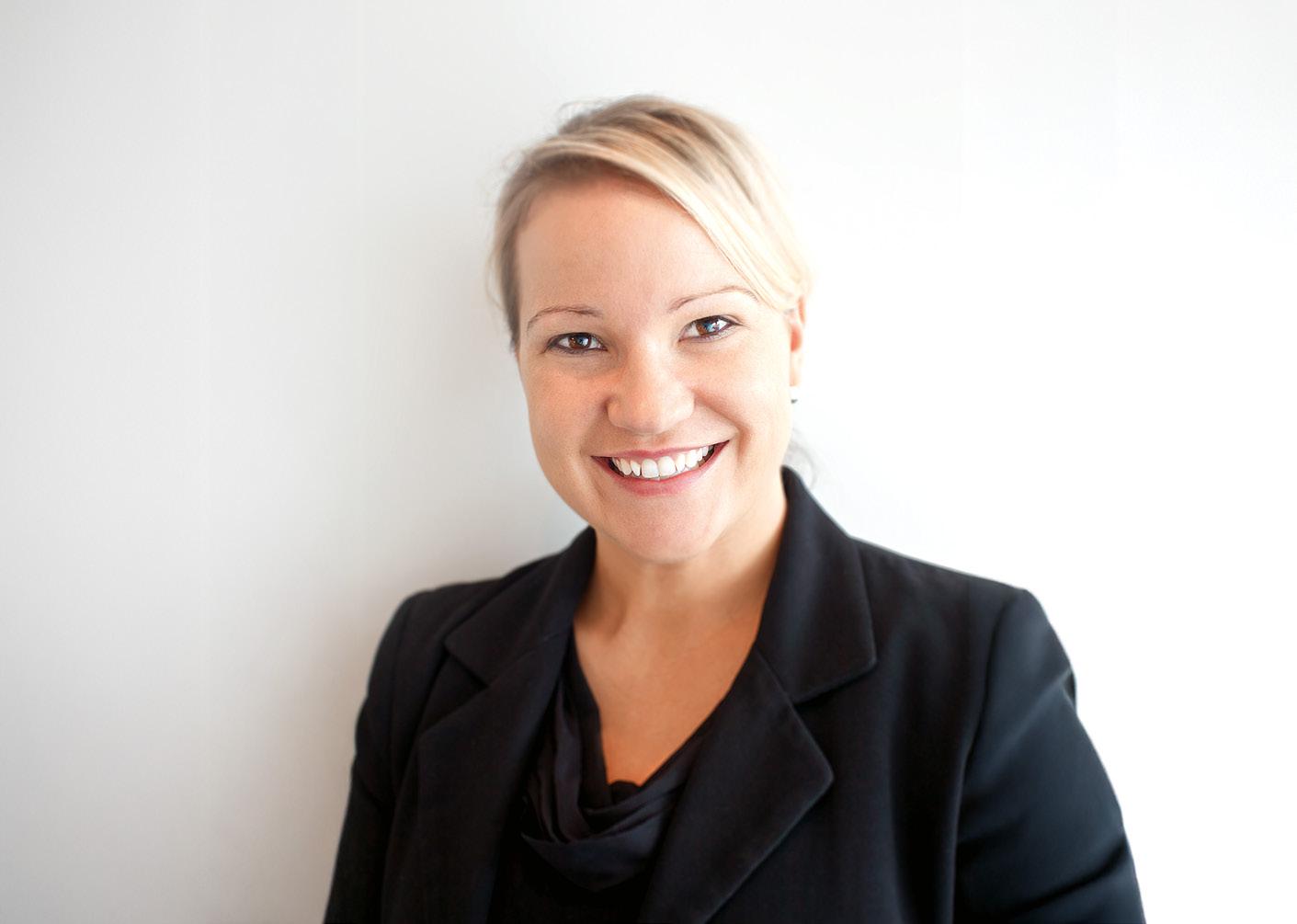
2024 saw the industry come together with the formation of the Labels & Packaging Coalition, a start to bringing an industry voice into the important sustainable packaging reforms underway with the government.
The Department of Climate Change, Energy, the Environment and Water (DCCEEW) Packaging Guidelines consultation was the first time industry united under the Visual Media Association (VMA) to submit a true industry voice, rather than a technical educational or covenant voice to the table.
As a sovereign manufacturing industry, our voice is critically important to ensuring government reforms are indeed reforms, not additional regulations that impose hidden taxes and reversed tariffs on Australian manufacturing.
The entire labels and packaging sector is one committed to sustainability, innovation and connectivity or customisation.
Research and development across inks, production, recycling, new substrates, removal of single-use plastics, chemicals and more will continue with firm focus on sustainability principles. This will marry sustainability with innovation,
maintaining a strong alignment with global trends and practices.
That said, sustainability is more than recyclability and the packaging sector will need to evolve and seek to apply nature positive principles.
Recycled content and sustainably sourced fibre will be critical in this discussion as the role fibre-based will play in the removal of carbon from the environment, a critical opportunity not to be overlooked or under-considered for the sector.
Customisation or personalisation with digital print adaptation will be equally invested in, as we look to graphic packaging sectors offering improved brand experience on the retail shelves and delivery doorsteps.
RFID technologies and barcoding solutions will continue to be developed with traceability from site to site of the packaging lifespan.
Workforce shortages, like most industries, will play a role in manufacturing technologies also with greater emphasis on automation, workflow technologies and more to drive operational efficiencies, improvements and quality of output.
The number one priority for the Labels & Packaging Coalition under the VMA, in 2025, is to bring the industry voice, that is the voice of businesses, to the government when determining decisions made across reform and regulation. We must consider the practical implementation on new regulations and how international markets will be enforced.
As an industry dedicated (with a proven track record) to sustainability we will apply razor-sharp focus ensuring reforms deliver improved sustainable outcomes.
In recent years, we have seen technical and covenant organisations apply a limited industry lens into reforms which has delivered poorer environmental outcomes with significant negative impact on industry.
The Labels & Packaging Coalition under VMA will be testing, investigating, and reporting on all new reforms to ensure it meets international standards and achieves an improved sustainable outcome.
A part of this will be in education as some brands and retailers are seeking more information and it is the industry’s responsibility to share knowledge and expertise for brands to understand how their designs and specifications can best deliver a better outcome for all.
The labels and packaging sectors are undergoing incredible evolution across sustainability driving recyclability, biodegradability, non-toxic, compostability, and more, with a true end-to-end community demand from consumers to brands, manufacturers to distributors, packaging design is being revolutionised with great opportunity.
Leaning into international standards and innovations will be critical as overseas markets are further advanced in this space than A/NZ regions, which leaves opportunities for the A/NZ industry sector to continue those innovations and advance them further.
Regulations must be considered carefully, as current drafts and approaches from government are not actually improving sustainable outcomes and impacting businesses, this is the greatest challenge; however one that starts with communicating a true and non-agenda driven industry voice into the appropriate departments.
I encourage all of industry to welcome the opportunities over the challenges. There is so much innovation being brought into Australia and the VMA welcomes it all. Working together with a united voice to deliver true reforms is a key opportunity for industry and indeed, the Labels & Packaging Coalition.
Label converters face challenges from many different directions that directly threaten the profitability of their businesses. However, despite pressures on price and severe labour shortages, combined with the need to adapt quickly to new market trends while delivering high quality labels, there are still opportunities to grow for those ready to embrace the world of digitalisation, automation, and connectivity.
Following a contraction of the label market in 2023, volumes returned to more normal levels in 2024, according to Smithers’ The Future of Printed Labels to 2029 report. Even better news, the report predicts a compound annual growth rate (CAGR) in value of 4.6 per cent, which is equivalent to 4.4 per cent in volume terms. But competition is fierce, and costs are rising, meaning converters must implement solutions that simplify label production to capitalise on this growth and safeguard profit margins.
Label converters operate in a dynamic market that requires a high level of agility to respond to brand owners’ demands for rapid turnaround, shorter run lengths, and excellent quality. However, the industry faces a growing shortage of skilled operators and a knowledge transfer gap due to fewer young people entering the field. Without experienced staff to run the presses and operate the finishing machines, the industry must look to technology to maintain standards.
One of the major pain points compounded by the skills drain is ensuring colour consistency – not only over time but also across different printing technologies and applications. Meanwhile, the increasing emphasis on sustainability, including waste reduction and the use of new ecofriendly materials, adds a significant dimension to an already complex situation.
We are seeing the industry addressing these issues from a product and process point of view. The main trend can be observed in digital printing with a move towards automated inline processes. Here, end-toend or ‘all-in-one’ workflows are gaining ground. Already in use by most medium to large converters, these advanced integrated

solutions are capable of producing readyto-ship labels in one pass with a single person operating the entire line.
Narrow web flexo technology is also being further optimised by incorporating higher levels of automation and digitalisation to improve efficiency and minimise waste, regardless of the machine operator’s skills or qualifications. It is important to note that flexo remains the primary technology for label production in the short- to medium-term, accounting for nearly 40 per cent of the market volume in 2023, according to Smithers.
Operating old flexo presses is an art in itself, so with the number of experienced operators falling rapidly, companies must move to more automated solutions to ensure output quality. BOBST is already well regarded for its highly automated inline flexo presses with innovative features such as DigiFlexo and DigiGap ensuring automatic register and pressure adjustment, automatic job change, and high-performance semi-rotary die-cutting with automatic die-plate change, amongst others.
The transition to all-in-one operation, where labels are produced on one machine that incorporates digital and flexo printing, embellishment, die-cutting and quality control, is ramping up, driven by the need to deliver exceptional quality at speed with the lowest possible amount of waste and at competitive costs. Configurable with any number of value-adding modules, the Digital Master modular platform from BOBST gives converters the
capability to produce a much wider variety of superior quality products. Complex applications, such as multilayer labels, highly embellished labels, to name a few, can be much more effectively produced on these presses.
At BOBST, we are focusing our efforts on the development of automated, digitalised and connected solutions. The aim is to provide the highest ease-of-operation by leveraging a closed loop workflow infrastructure through BOBST Connect, the cloud-based platform created for a seamless entry into the data-driven world.
This is the BOBST vision – a fully connected workflow from job PDF to final twin PDF, where with every job we print, we learn more to continually improve the way we work.
Looking ahead, we foresee that labels will increasingly be produced in a single pass due to the trends discussed above. BOBST’s inline flexo and all-in-one presses are designed to future proof our customers to ensure they stay ahead of the curve and adapt to evolving market needs with confidence.
Further ahead, smart factories are on the horizon. While for the moment the concept of fully automated label production is visionary thinking, we are closing the gap step by step. Technology has reached a high standard, the next level in innovation lies in optimising the processes, streamlining operations and connecting the dots between different workflow steps.
By Patrick Graber, narrow-mid web printing and converting marketing director at BOBST.
Packaging industry reform is critical in today’s society, but the solution must work for Australia, writes Orora Cans’ executive general manager Chris Smith
As a leading manufacturer of sustainable and infinitely recyclable beverage packaging solutions, Orora is fully supportive of the Federal Government’s initiative to successfully reform the Australian packaging industry.
The main objectives of reform – to increase the circularity of packaging materials and reduce waste to landfill –are already central priorities for Orora. We have already made significant public commitments to increase the recyclability of our products, including a target of 60 per cent recycled glass by the end of this financial year. We have invested heavily in technology and infrastructure to ensure we meet these commitments.
In this sense, Orora fully supports the introduction of mechanisms and targets designed to encourage producers to adopt more sustainable packaging and meet the key objectives of reform.
Reform mechanisms of various models have been introduced in some overseas markets in recent years, which provide some key learnings. Many of these have seen the introduction of mandated recycled content targets, among other mechanisms designed to improve packaging outcomes.
While we support reform, we also know that our market is unique and that there is no ‘one size fits all’ approach. We have identified several key principles that we believe are central to achieving reform goals and to avoid any unintended consequences.
Australia is unique – so we need a unique solution
While Europe provides a leading example with its advanced regulatory frameworks, these standards may not be directly applicable to Australia. To give reform the best chance of success, we need to consider our domestic recycling capabilities, existing infrastructure, and market dynamics.
Any recycled content targets should be phased and align with Australia’s current capabilities and infrastructure.

These should start with achievable short-term goals and gradually increase as the recycling industry matures and benefits from potential investment.
Currently, there are opportunities for further improvement in our collection, sorting, recycling, and reprocessing capabilities. In the beverage market, the primary need is the availability of sufficient quantities of recovered packaging at acceptable quality levels for reprocessing.
While container deposit schemes are the most efficient and effective means of capturing beverage packaging waste, greater investment is needed in the collection packaging through kerbside collections.
Currently, this material flows to Materials Recycling Facilities (MRF) across Australia that may not have yet invested into capability to upcycle materials into usable formats. To this end, we should encourage investment in recycling technologies and infrastructure, and support research and development. So, any set targets should be applied in this context.
A robust monitoring system to track progress towards recycled content targets is also essential. Targets could then be periodically reviewed and adjusted based on industry advancements, market changes, and stakeholder feedback, to ensure ongoing relevance and achievability.
Reform should also reflect regulatory policies that ensure equitable treatment between imports and the domestic industry. This is to prevent any unfair advantages for cheaper imported goods from countries with less stringent packaging and environmental policies.
By considering the unique aspects of the Australian marketplace and setting tailored realistic targets, we can drive sustainable packaging practices that are both practical and effective within the local context.
Mandated targets need to find a balance – particularly for aluminium
Any recycled content targets need to be carefully managed. Firstly, a mandated recycling rate carries a risk of adversely impacting the price of recycled content through increasing demand, which could result in this becoming a maximum recycling rate rather than a differentiation based on recycled content.
This is particularly relevant for aluminium beverage container manufacturers, that face a current absence of domestic aluminium manufacturing and recycling capacity. Mandating recycled content without this critical onshore supply chain element may lead to unintended consequences, such as inflated commodity prices for recycled aluminium.
As the leading can maker in Australia and the Oceania region, Orora places high focus and importance on ensuring we efficiently collect all manufacturing process scrap and hold accountability for the process to ensure this scrap is fully returned to Orora suppliers. This ensures both the ongoing circularity of material and supporting the highest total recycled content from aluminium sheet suppliers.
Reform mechanisms must be carefully assessed to ensure they incentivise the right packaging choices by brand owners without compromising their competitiveness.
A whole of industry approach is critical for reform to succeed in Australia. Driving long-term, meaningful change should incentivise industry operators to adopt more recyclable substrates and ultimately benefit the industry and most importantly, allow a truly circular Australian industry to thrive.

Chris Smith is the executive general manager of Orora Cans.

Reel to reel high-definition digital label printing machines with hybrid options available

Continuous unwind and rewind systems for nonstop labels and packaging machine printing
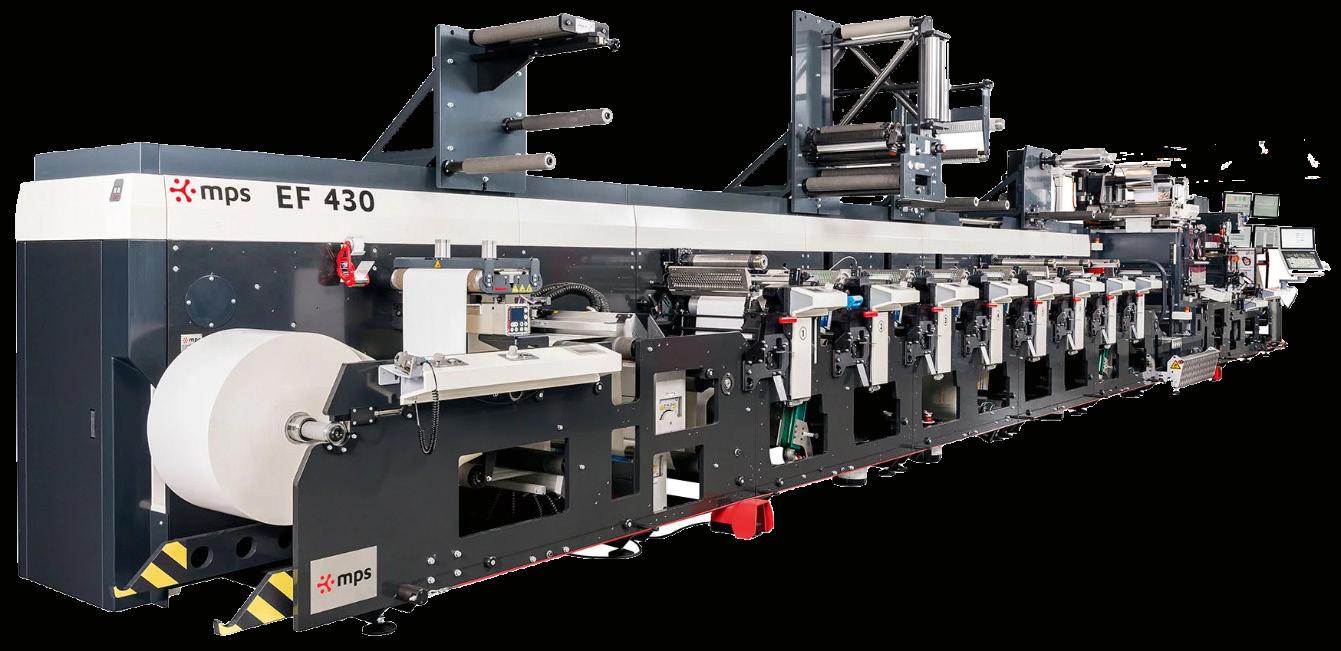

High speed hot foil and embossing machines, standalone or integrated into existing machinery












BGM Elite Label-i Automatic Inspection Slitter Rewinder
Free-standing label inspection slitter rewinder suitable for paper labels, transparent clear-on-clear & films

BGM Elite Comflex Compact Digital Converting Finishing System
A fully offline entry level digital converting finishing solution suited for any digital print house

BGM Elite Digiflex Digital Converting Finishing System
Use as a spot register station or a simple flood coating station. Available in both full or semi-rotary die cutting versions



Dantex has announced the launch of the PicoColour HD and PicoJet 1200 models.
Built on a modular platform, the Picojet 1200 is a true hybrid system, available as a reel-to-reel press with a print width to 350mm and speeds of up to 75mpm, as a bespoke hybrid system where a variety of base and additional colour stations can be custom configured to incorporate features such as full or semi-rotary die cutting and a variety of flexo station options.
The PicoColour HD is built on and benefits from advanced Picojet technology, providing print width to 254mm with speeds of up to 50mpm, and compact inline finishing. Offering excellent printed results and suitable for short and long run jobs, the HD press provides all the benefits of digital printing for today’s demanding production environment.
Nekkorb Solutions commercial manager Tash Brokken said, “Pico offers highly productive, affordable label printing; no minimum run quantity; minimal waste; super-fast turnarounds; and it makes label production fast and easy. Modular station options can include flexo, die cut, cold foil, lamination, edge trim, back scoring and rotary or shear slitting.
In addition, PicoCenta and PicoPilot workflow automation software with touchscreen interface adds to a user-
friendly experience. Other features include SuperWhite ink, offering an opacity of 92 per cent in a single pass; SuperText, which delivers super fine text; and DecoTactile for a wide range of textured embellishments.
“PicoJet’s Digital Resolution System (DRS) significantly increases print quality and detail, positioning the PicoJet DRS as groundbreaking in the label and flexible packaging space. Featuring eight grey levels and providing 2400 dpi, this proprietary technology, owned exclusively by Dantex, marks the first time in the industry that a digital inkjet system has reached this level of precision.
“Pico technology also boasts advancements in colour gamut, setting a new benchmark for digital UV inkjet printing, ensuring unparalleled colour accuracy and consistency. With a Delta E of 2, it continues to push the boundaries of colour precision, covering 97.5 per cent of the colour gamut. Utilising CMYK WOVG, Dantex’s eightcolour printing press achieves the highest colour accuracy due to the combination of its incredibly powerful software suite with Dantex’s printing technologies.
“Dantex’s Pico presses have passed a stringent 150-point requirements list which guarantees that the manufacturing supply chain is ‘truly British’. Only those products that pass this test are permitted to carry the Made In Britain mark. The Made in Britain accreditation is an international seal of excellence.”
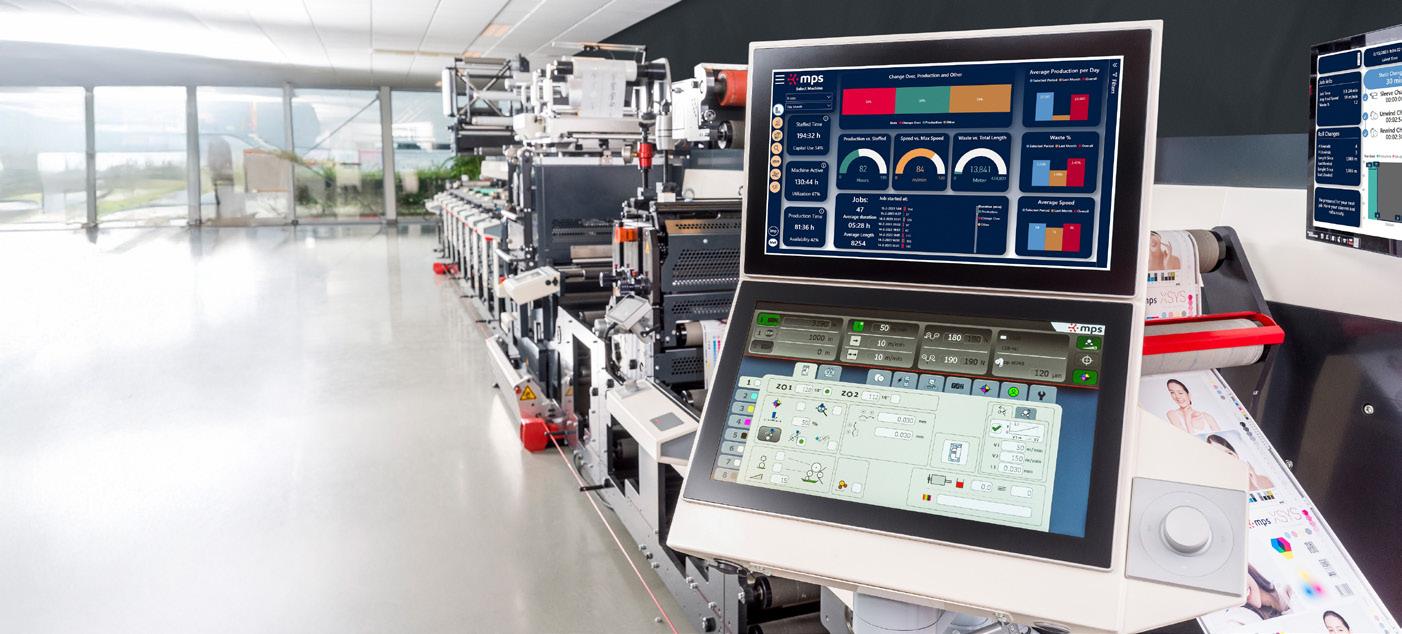
In the evolving landscape of label printing, the MPS EF Symjet hybrid machine, with its Domino inkjet print engine, sets a new benchmark for efficiency, versatility, and print quality, according to Tash Brokken, commercial manager at Nekkorb Solutions. She said, “This cutting-edge machine combines the strengths of flexographic printing with state-of-the-art digital technology, offering label manufacturers unparalleled flexibility and productivity.
“At its core, the MPS EF Symjet is built on the robust MPS EF platform, renowned for its precision and userfriendly operation. The addition of Domino’s inkjet technology elevates this press to a hybrid marvel, seamlessly integrating traditional and digital workflows. This hybrid capability enables printers to handle short-run, variable data jobs alongside longer production runs without the need for multiple machines, reducing operational complexity and maximising return on investment.
“One of the standout features of the MPS EF Symjet is its high speed performance. The Domino engine delivers impressive digital speeds of up to 70 metres per minute, ensuring that even the most demanding production schedules are met with ease. Combined with MPS’s advanced web control system, the Symjet guarantees consistent quality and accuracy, even at top speeds.
“The machine’s ability to switch effortlessly between flexo and digital printing is another game-changer. Users can apply spot colours, varnishes,
or cold foils through flexo units, while the digital module provides vibrant fullcolour printing with up to seven UV-curable ink colours, including opaque white. This flexibility enables the production of complex, high-value labels in a single pass, reducing waste and time while enhancing creative possibilities.
“Sustainability is another key benefit of the MPS EF Symjet. By enabling on-demand printing, it minimises waste associated with overproduction and setup. Domino’s environmentally friendly UV ink system further supports greener production practices, aligning with the growing demand for sustainable solutions in the printing industry.
“In addition to its technological prowess, the Symjet boasts an intuitive operator interface, ensuring ease of use and reduced downtime. The machine is designed for quick setup and changeovers, further enhancing efficiency for businesses handling diverse print jobs.
“For label manufacturers seeking a future-proof solution, the MPS EF Symjet represents a transformative investment. By blending the reliability of flexo with the agility of digital, it delivers unmatched performance, empowering businesses to meet market demands while staying ahead of the competition.”
For more information and a confidential appraisal of your printing requirements contact Frank or Tash at Nekkorb Solutions. Frank +64 277138987, Tash +64 21423464 or email; info@nekkorbsolutions.co.nz.












Bring new life back into your old printing machine
Paper
Paper
Save money
Energy
Ink
Save money
• Save money
Energy • Best in class colour consistency
Ink
Ink
new life back into your old printing machine
Paper • Energy • Best in class colour consistency
Save money
Paper
Paper
• Seamless integration with most rips
Energy
Ink
Energy
• Best in class colour
• Seamless integration
Best in class colour consistency




production quicker than ever before.


• Seamless integration with most rips This closed loop colour measurement solution delivers fast make ready and gets the machine into production quicker than ever before. Ready or considering the upgrade?
Rutherford.fr your old printing machine
This closed loop colour measurement solution delivers fast make ready and gets the machine into production quicker than ever before.
Contact us now
measurement solution delivers fast make ready and gets the machine into production quicker than ever before.
This closed loop colour measurement solution delivers fast make ready and gets the machine into production quicker than ever before.
Ready or considering the upgrade?
Ready or considering the upgrade?
Rutherford.fr
Ready or considering the upgrade?
Ready or considering the upgrade?
Rutherford fr
Paper This closed loop colour measurement solution delivers fast make ready and gets the machine into production quicker than ever before. Ready or considering the upgrade?
Rutherford.fr
Get in touch with our partner Contact details: Frank: +64 277138987
Get in touch with our partner
Contact us now Get in touch with our partner
9
Contact details: Frank: +64 277138987
+64 9 8263441

For over five decades, the familiar black and white lines of barcodes have quietly powered global commerce, but it is time to prepare for a future where they don’t just ring up prices but unlock a world of data, transparency and connectivity
By Labels & Labeling’s Piotr Wnuk

Barcodes have been a staple of retail for five decades, with their simple black lines becoming synonymous with modern commerce. However, a new chapter in barcode evolution is unfolding.
The once static and basic barcodes are being replaced with more advanced twodimensional (2D) codes, which promise to unlock a range of benefits for consumers, brands, retailers and the entire supply chain.
Let’s explore the journey and future of barcodes, from their inception to the upcoming digital transformation.
The birth of the barcode
Fifty years ago, in 1974, a pivotal moment in retail history occurred with the first-ever barcode scan.
The scan was performed at a Marsh Supermarket in Troy, Ohio, on a 10pack of Wrigley’s chewing gum.
This marked the beginning of a new era of retail and supply chain automation, fueled by the introduction of the Universal Product Code (UPC) developed by GS1 US, the not-for-profit organisation responsible for global barcode standards.
Bob Carpenter, president and CEO of GS1 US, reflects on the barcode’s origins, “The barcode was created to solve a pressing issue – slow and manual checkout processes in grocery stores.
“Before its introduction, every product required a price tag, and cashiers manually entered each price. The barcode streamlined this process,
allowing for automatic price lookup and dramatically speeding up transactions.”
Since that first scan, barcodes have become an integral part of global commerce, identifying over a billion products and being scanned more than 10 billion times daily. While the traditional barcode has primarily served to provide pricing information, the retail landscape is shifting toward greater transparency and consumer engagement, driven by increasing demands for detailed product data.
Consumers demand more information
Recent consumer behaviour research conducted by GS1 highlights a growing demand for more information at the point of purchase.


The survey revealed 77 per cent of consumers believe that product information is essential when making a purchase decision, and 79 per cent prefer products with scannable codes that offer additional details, such as nutritional information, allergens, or sourcing data.
This shift has spurred a digital transformation in the retail industry.
While barcodes were once limited to price lookups, they are now evolving into dynamic tools that connect consumers with valuable information via their smartphones.
One example of this is the increased use of QR codes. These codes, often printed alongside traditional barcodes, allow consumers to scan and instantly access detailed product information online.
Carpenter explains, “A product’s packaging can take up to 18 months to change, particularly when adjusting key information like allergen warnings or nutritional content.
“However, a QR code enables brands to update this data instantaneously through an online portal, ensuring consumers always have the latest information. This shift is not just about convenience –it’s about giving consumers control and making informed decisions easier.”
The next-generation barcode
To meet these evolving consumer expectations, GS1 has developed

a new two-dimensional (2D) barcode that builds on the existing UPC standard.
These next-generation codes not only deliver product pricing at checkout but also function like QR codes, providing rich, detailed product information to consumers.
This technology is designed to support both in-store checkout systems and mobile scans, offering versatility across retail environments.
“What started as a need for speed using the UPC barcodes has transformed into a need for access to product-related information,” said Carpenter.
“With better inventory management, traceability and sustainability data, the new GS1 standards incorporate QR codes to deliver this real-time information.”
The 2D barcodes are designed to merge the capabilities of both UPC and QR codes, allowing for a seamless checkout experience while giving consumers access to product origin, manufacturing dates, lot numbers, expiration dates, and more with just a simple scan.
The potential impact of this technology extends beyond retail, providing greater transparency and efficiency across the entire supply chain.
The transition to 2D barcodes offers significant advantages to stakeholders across the supply chain.
By enabling the seamless capture and exchange of product data between trading partners, these codes enhance supply chain visibility and control.
This is particularly critical for industries like food and pharmaceuticals, where traceability and compliance are vital for safety.
For example, Topco Associates, one of the largest sourcing companies in the retail and grocery industry in the US, has adopted 2D barcodes for end-toend supply chain traceability.


These codes support the company in meeting increased record-keeping requirements under the US Food and Drug Administration’s Food Safety Modernisation Act (FSMA) Rule 204, which is designed to improve food safety and protect consumer health.
Carrie Wilkie, senior vice-president of technology at GS1-US, underscores the importance of this technology for both businesses and consumers.
“2D barcodes enable superior supply chain visibility, improving inventory management and recall readiness,” she said.
“For consumers, this means easier access to health, allergen, recall, and coupon information through a simple smartphone scan.”
By bridging the gap between online and offline retail experiences, 2D barcodes create a digital portal for consumers to access personalised content, fostering stronger engagement and satisfaction.
The road to Sunrise 2027
In response to the growing need for more advanced barcodes, GS1 US launched the Sunrise 2027 initiative, a multi-year effort designed to transition the retail industry from traditional UPC barcodes to 2D barcodes by 2027.
This industry-wide initiative brings together major retailers, brands, and other stakeholders to establish standards, conduct testing and ensure a smooth transition to the new barcode system.
Sunrise 2027 is a collaborative process that involves setting requirements, analysing results, and optimising the use of 2D barcodes in various retail environments.

GS1’s role as a neutral standards body is critical in coordinating these efforts to ensure that all stakeholders – brands, retailers, regulators, and consumers –benefit from the new technology.
The transition to 2D barcodes is gaining widespread support from some of the world’s largest brands.
Companies such as Procter & Gamble, L’Oréal and Nestlé have publicly endorsed the move to next-generation barcodes, recognising the potential to revolutionise the consumer experience.
Alfredo Colas, senior vice-president of information technology at Procter & Gamble, emphasised the importance of this shift, saying, “By adopting 2D barcodes with GS1 standards, we’re empowering consumers with greater access to information and improving traceability throughout the supply chain.
“This commitment to innovation underscores our dedication to delivering a superior consumer experience and value to all stakeholders.”
Retailers are also preparing for the transition. Wegmans Food Markets, a pioneer in barcode technology, was one of the first to scan a UPC and is now leading the charge in testing 2D barcodes for future use.
“We’re actively pressure-testing our capabilities to ensure readiness for this industry transition,” said Dave DeLaus, Wegmans’ senior vice-president and chief information officer.
Publix, one of the largest grocery chains in the US, is also enthusiastic about the transition.
Dave Bornmann, senior vice-president of product business development at Publix, believes 2D barcodes will empower consumers to make more informed purchasing decisions while improving inventory management and store operations.
As the retail and packaging industries prepare for the widespread adoption of 2D barcodes, it is clear that this technology offers numerous benefits.
Not only will it free up packaging space, giving brands more room to communicate with consumers, but it will also support the digital transformation of retail by integrating online and offline experiences.
GS1 continues to play a pivotal role in bringing together organisations across industries to establish best practices for 2D barcode implementation.
As the barcode celebrates its 50th anniversary, this next chapter in its evolution promises to shape the future of retail and supply chain management for years to come.
Carpenter added, “The 50th anniversary of the UPC barcode scan serves as a testament to the lasting relevance of GS1 standards in an ever-evolving marketplace.
“As we embark on the next chapter of barcode innovation, GS1 US remains committed to driving progress and facilitating meaningful advancements that will shape the next 50 years and beyond in retail and supply chain.”

Scan the QR code to learn more about the GS1 Sunrise 2027 initiative and how to prepare for the change.

CCE International March 11-13, 2025 Munich, Germany cce-international.com
WEPACK 2025 April 8-10, 2025 Shanghai, China wepack-expo.com
Labelexpo Southeast Asia May 8-10, 2025 Bangkok, Thailand labelexpo-seasia.com
China Print 2025 May 15-19, 2025 Beijing, China printchina.com

PacPrint 2025
May 20-23, 2025 Sydney, Australia pacprint.com.au
PACK-IMA Milano May 27-30, 2025 Milan, Italy ipackima.com
20-23 May, 2025
The Dome, Hall 2 & 3, Sydney Showground


ProPak Asia 2025 June 11-14, 2025 Bangkok, Thailand propakasia.com
Industrial Transformation Australia July 22-24, 2025 Sydney, Australia industrialtransformation.com.au
Labelexpo Europe 2025 September 16-19, 2025 Barcelona, Spain labelexpo-europe.com
Pack Print International September 17-20, 2025 Bangkok, Thailand pack-print.de


File photo – New machine photo coming soon.
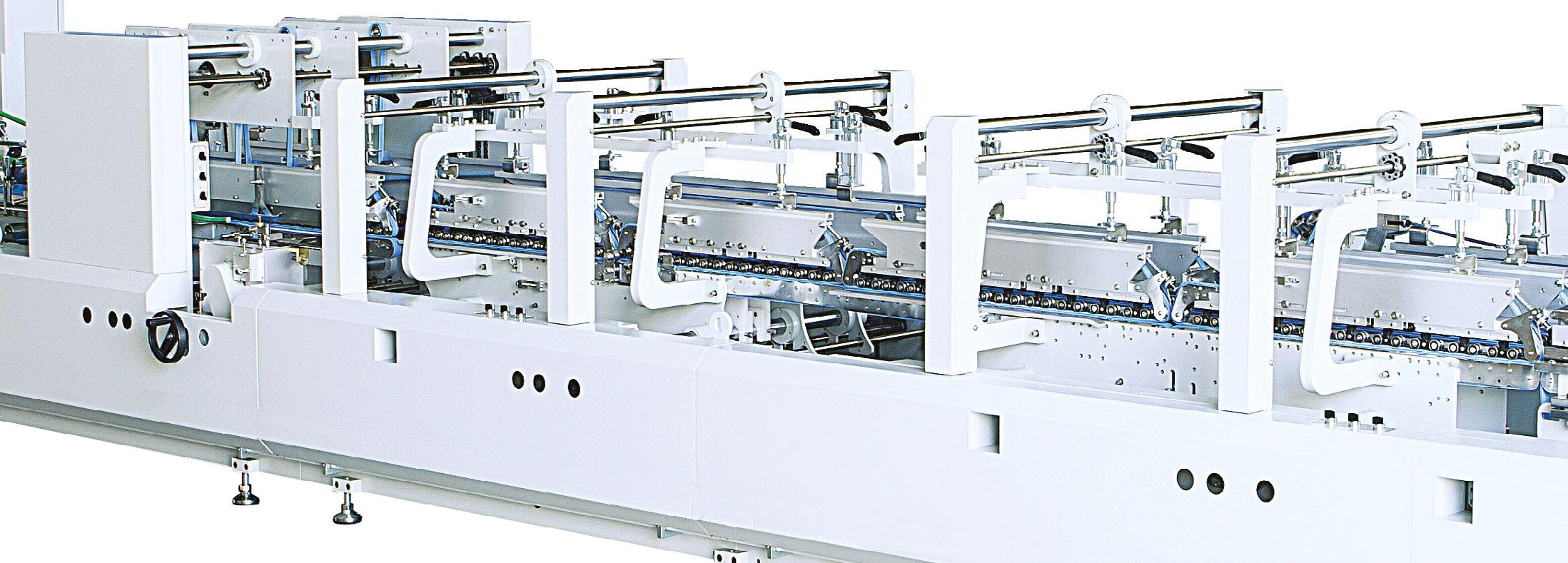
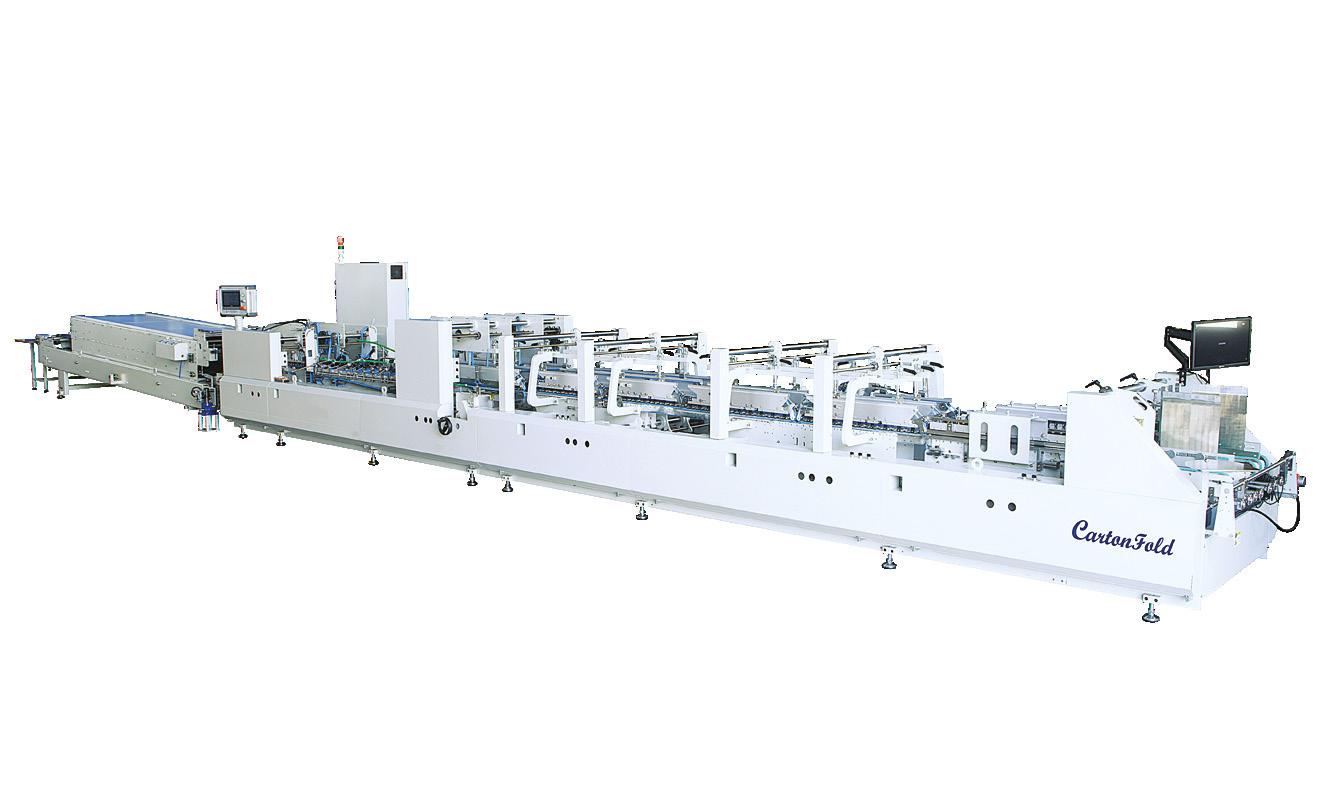
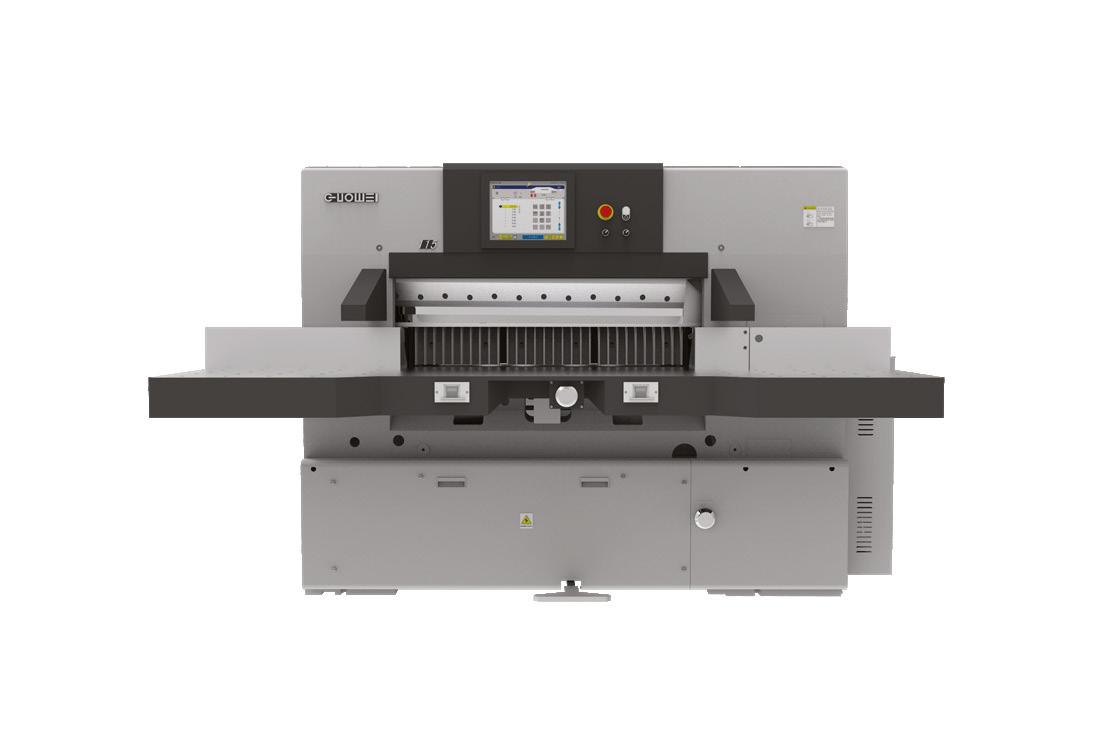
Guowei 52/68/78/92/115, and Datien 115/137/155/185/260/300 cm, available with handling equipment.
See our range of folding box gluers, board slitters, creasing machines, auto loaders, unloading cutting tables and more. Visit
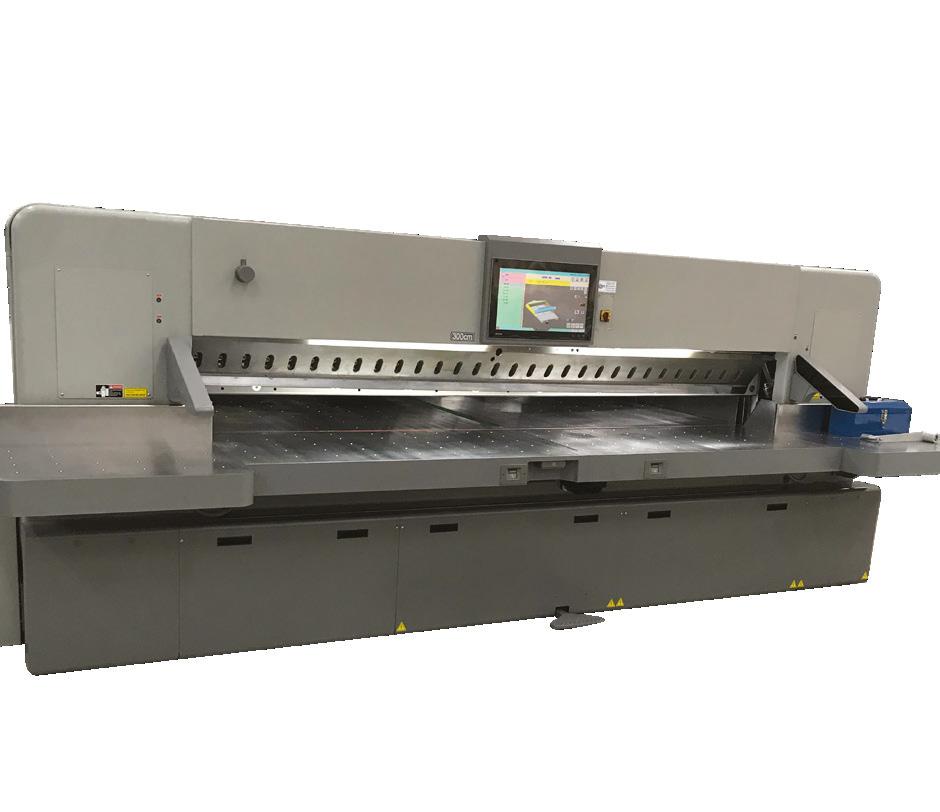

Discover our range of cutting and glue plotter tables!





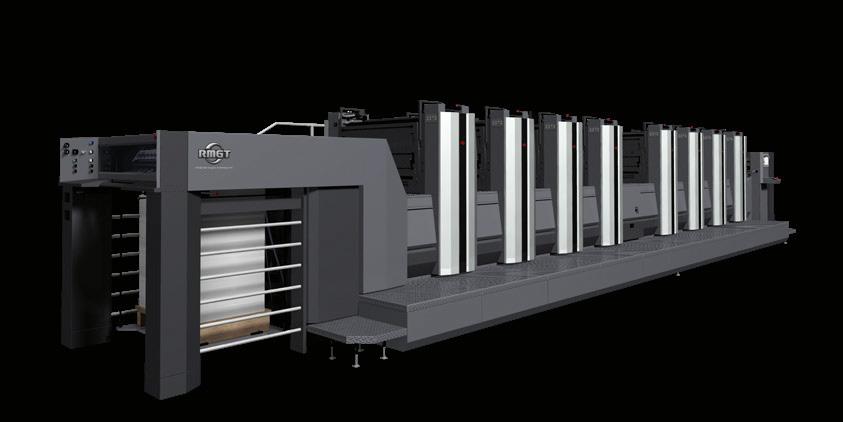







No odor
No Ozone
No spray powder
No set-off
No loss time
• Instant dry









• Instant ON/OFF irradiation
Reduce CO2 emission
No large peripheral equipment
No need for overprint varnishing
Reduce electrical consumption
• Up to 91%
No VOC (Volatile Organic Compounds)
Reduce heat generation
Long life span
• Up to 15 times
Printing on film and cardboard
Just like your conventional offset press ...without the cons.
The RMGT 1060TP series is the Gold Standard for perfecting printing. This innovative tandem perfector on which the reverse-side printing units are connected to a straight printing press via a special translink unit. After printing the reverse side, the front side is printed without the need to reverse the printed sheets, eliminating various limitations typically associated with perfecting. This also makes it possible to perform perfecting on folding cartons, such as for blister packaging. LED-UV perfecting printing is also possible by equipping both the translink unit and delivery with a LED-UV dry-to-dry printing system, providing an instantly dry, high-quality printing solution. Achieving printing quality equivalent to that of a straight press with highly accurate front to back registration. In addition, the translink unit does not flip the sheets thus perfecting printing can be done with only 1 grip edge. Eliminating the need to make plates differently for front side and back side printing units and can handle pallets of sheets with irregular length just like a straight press.

